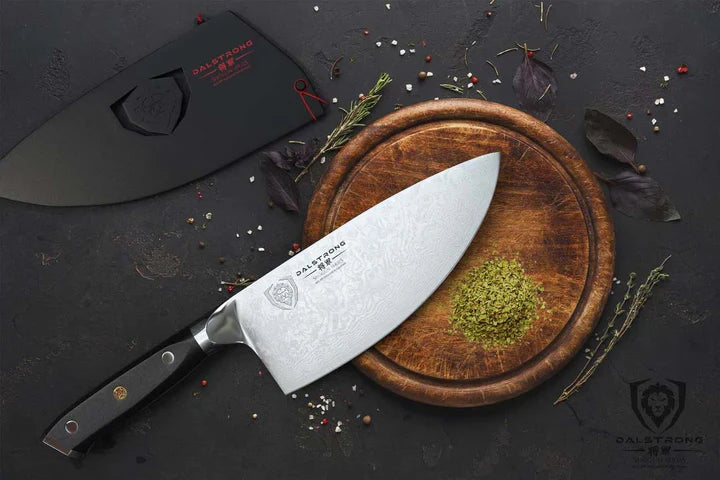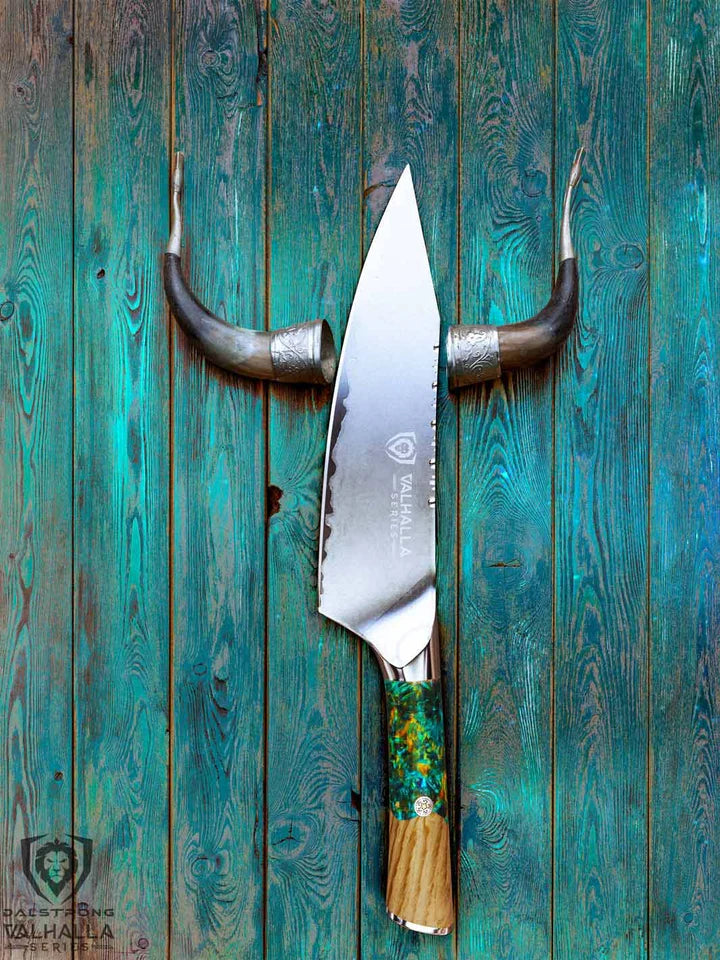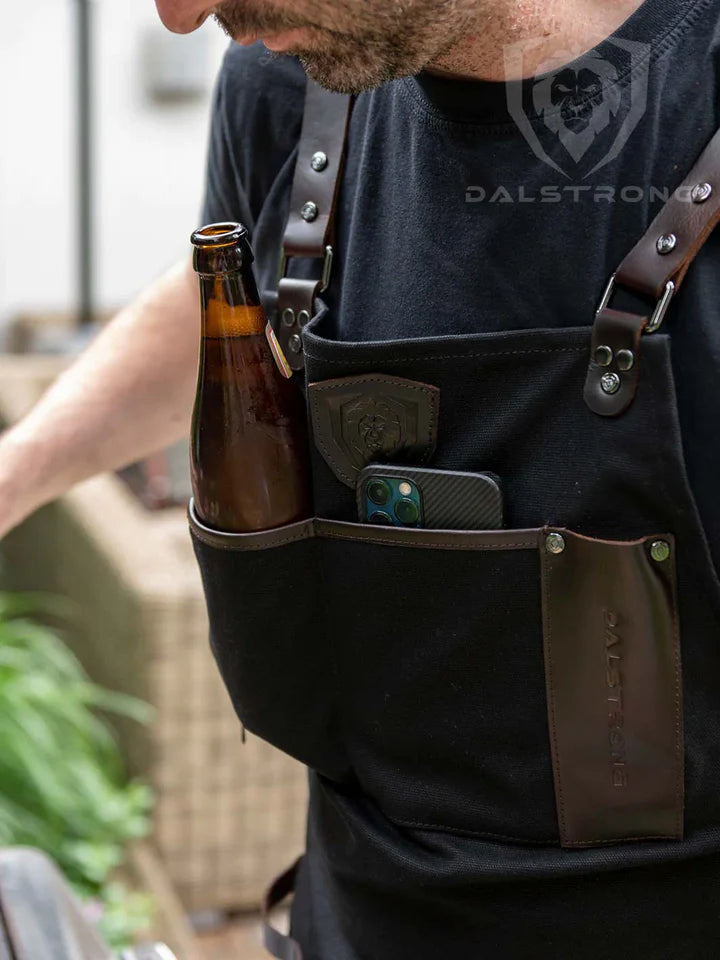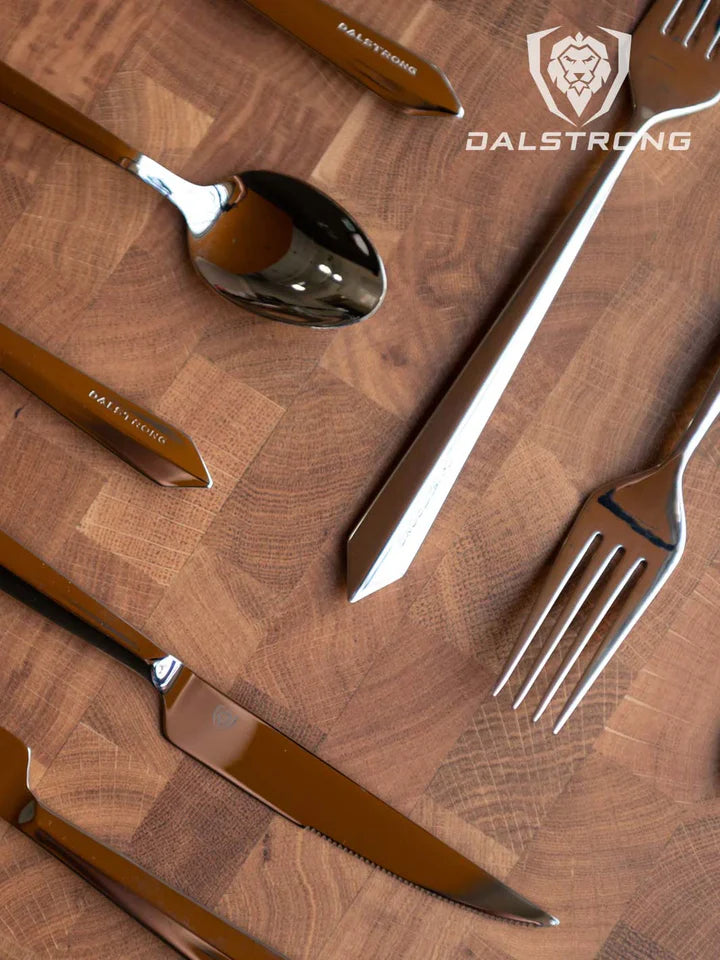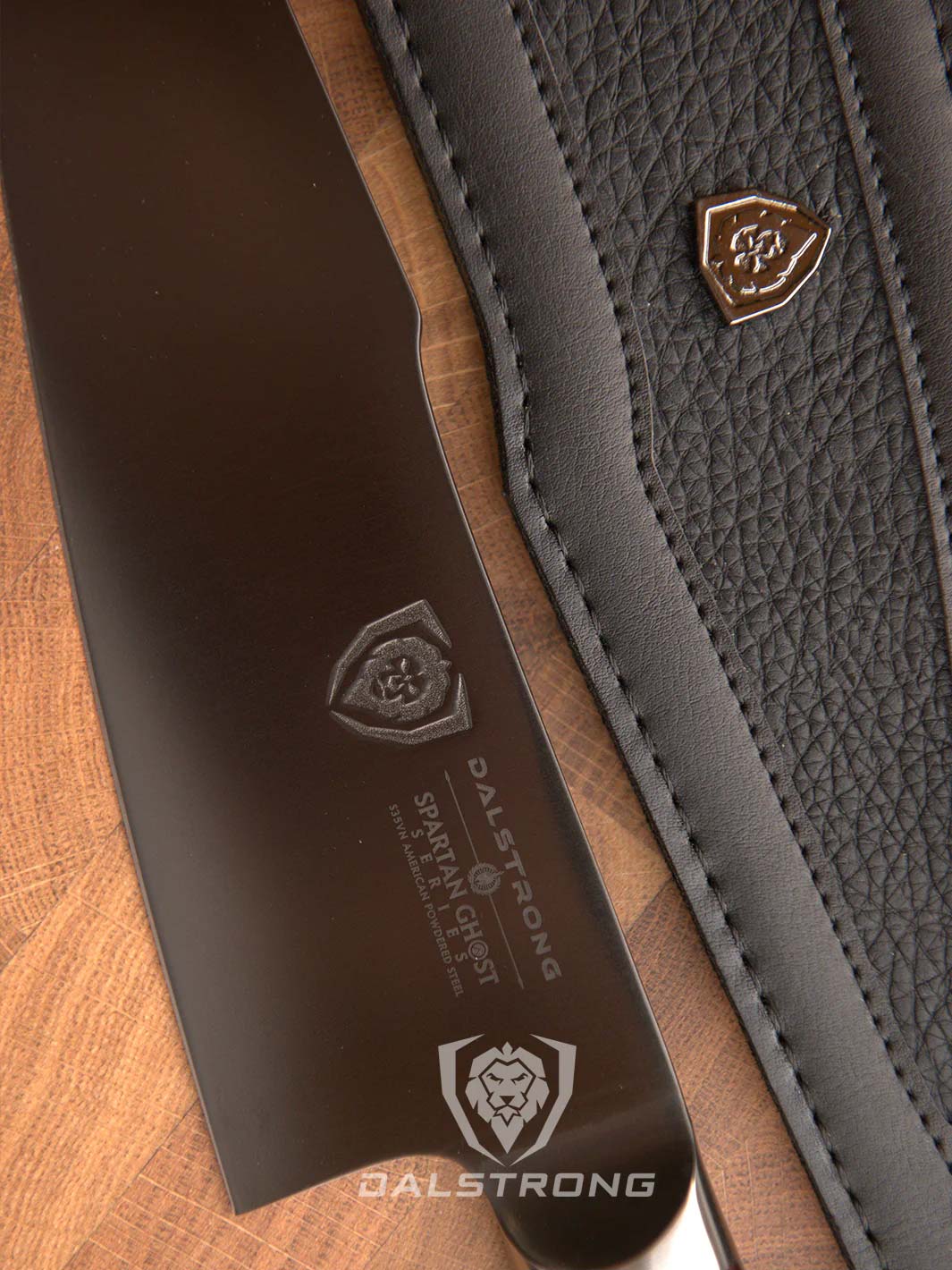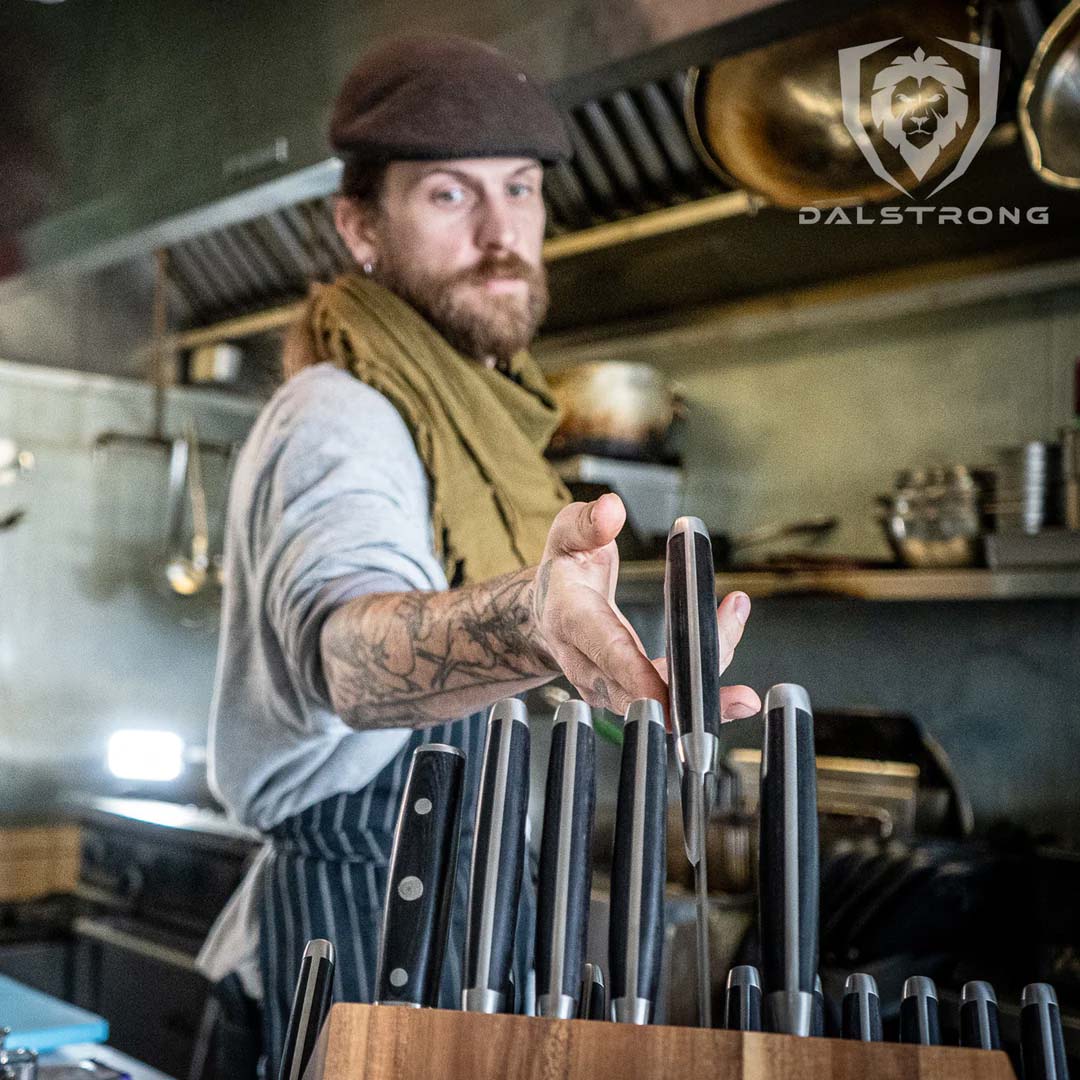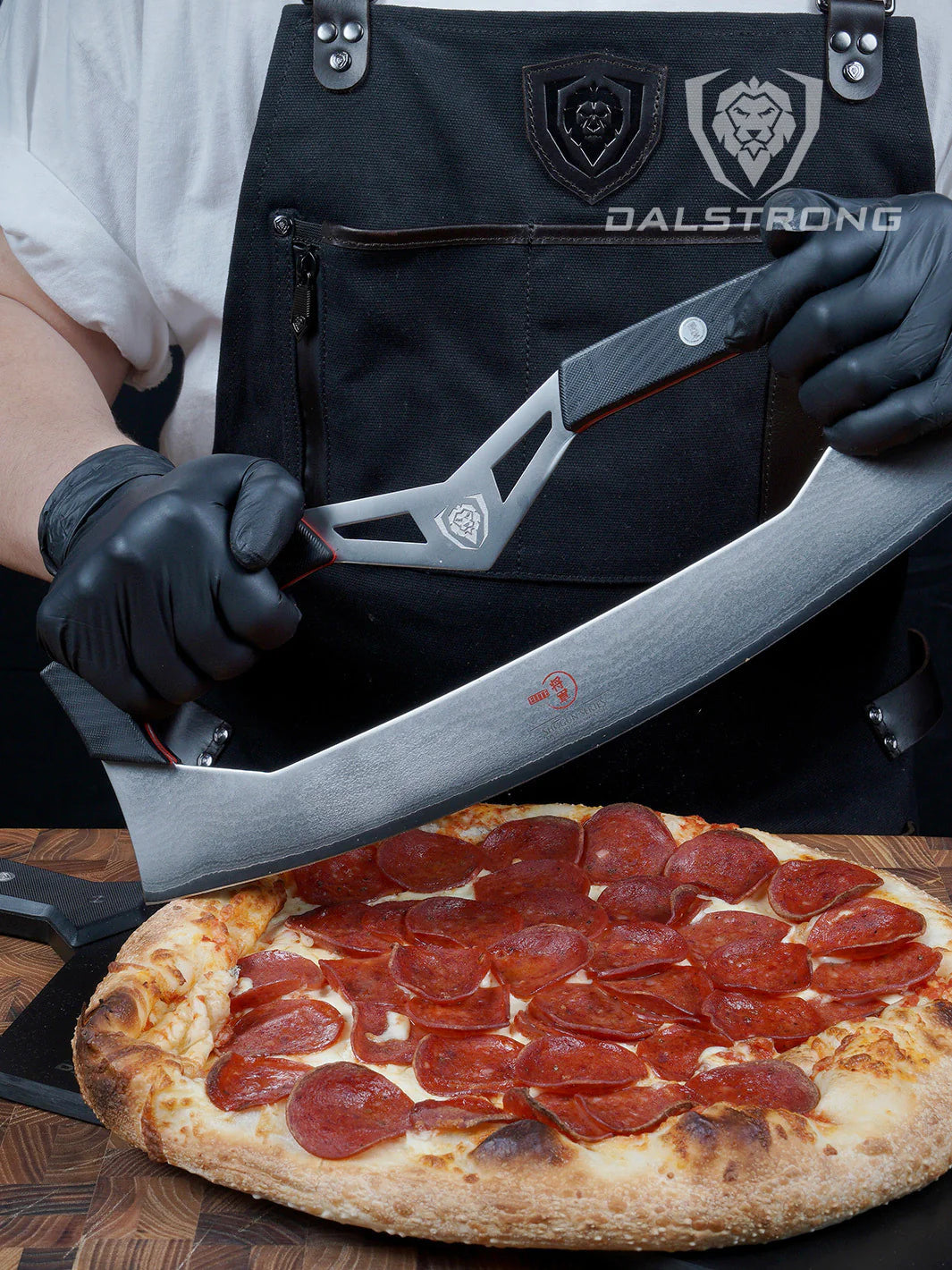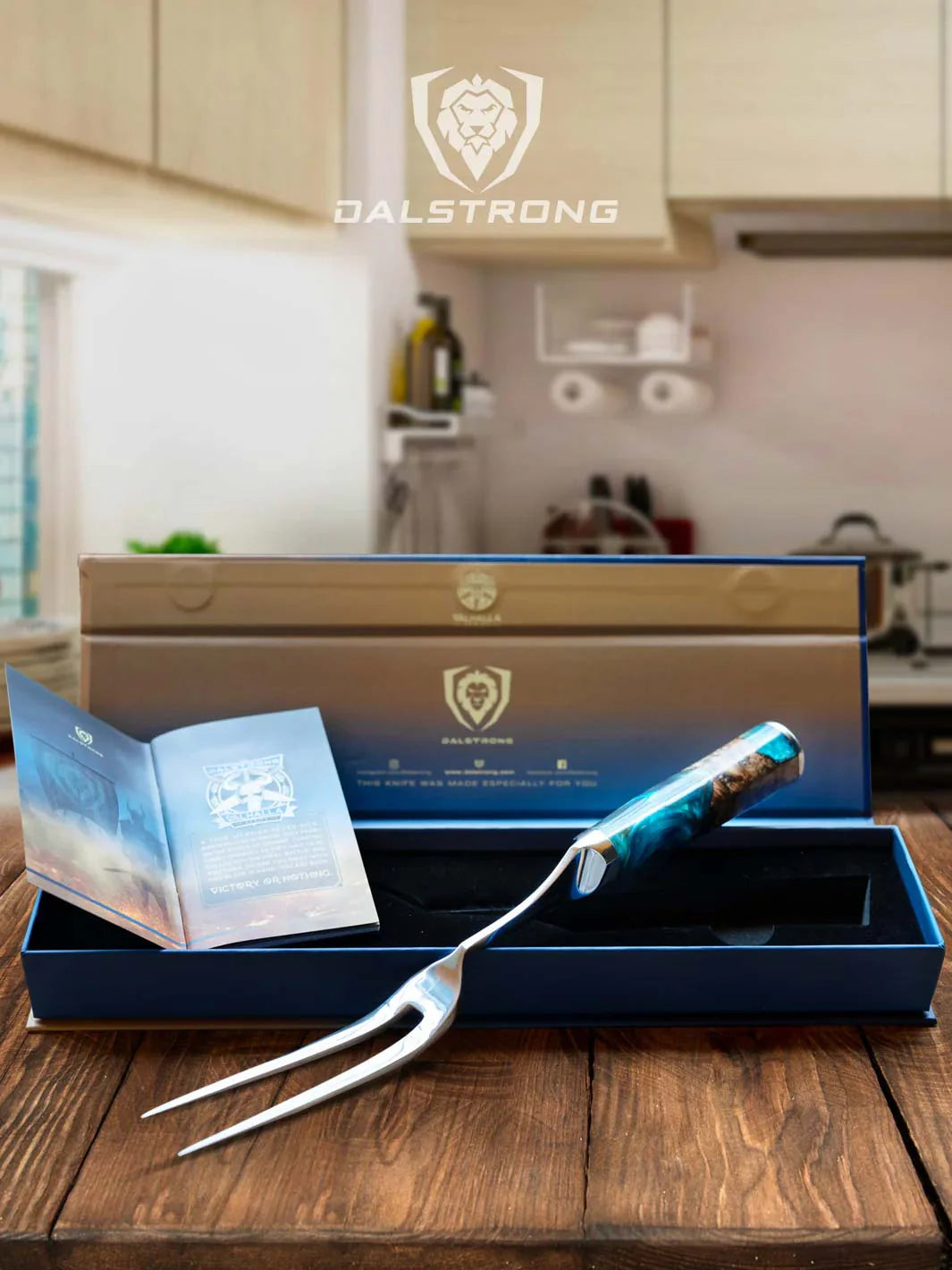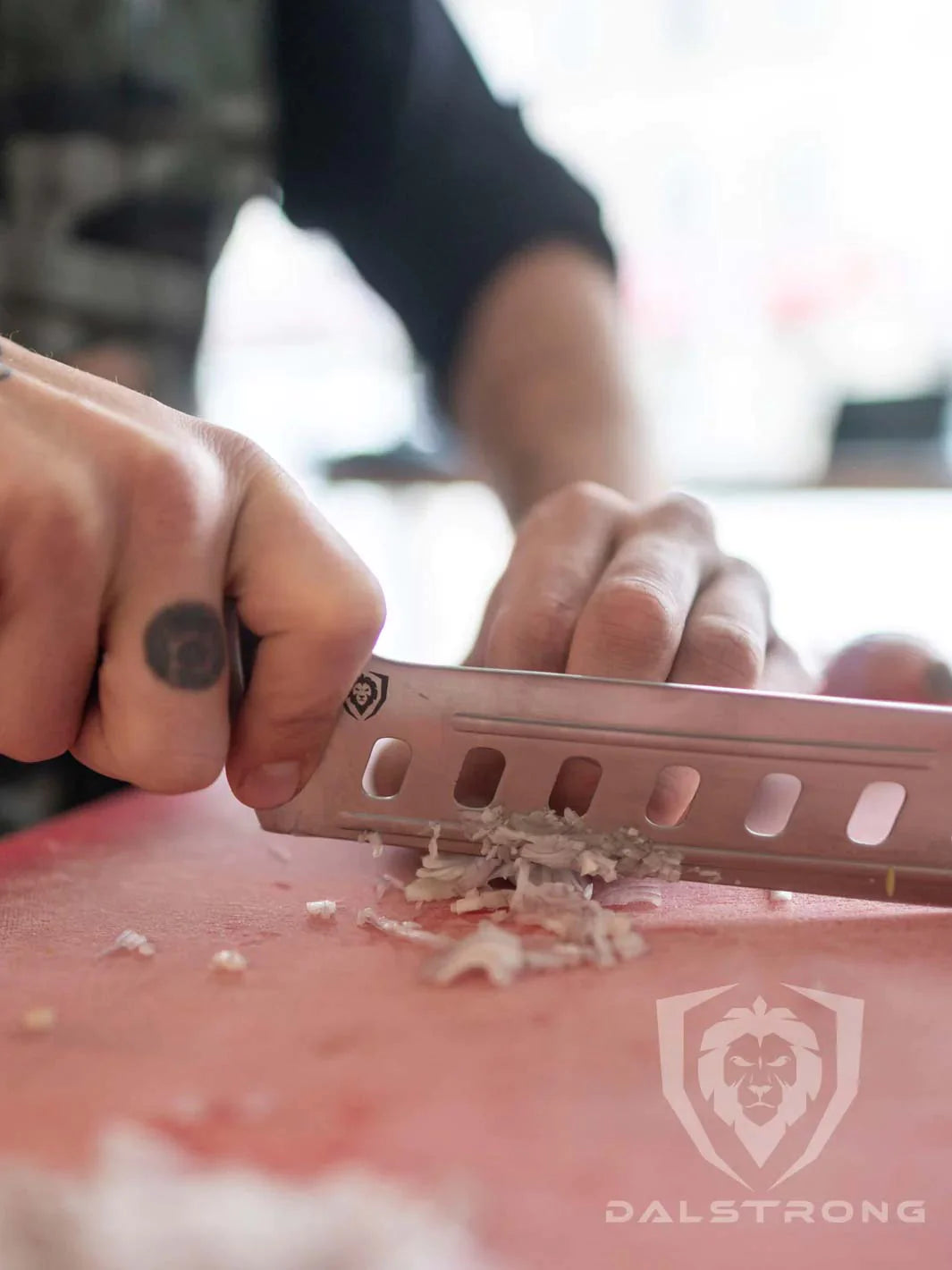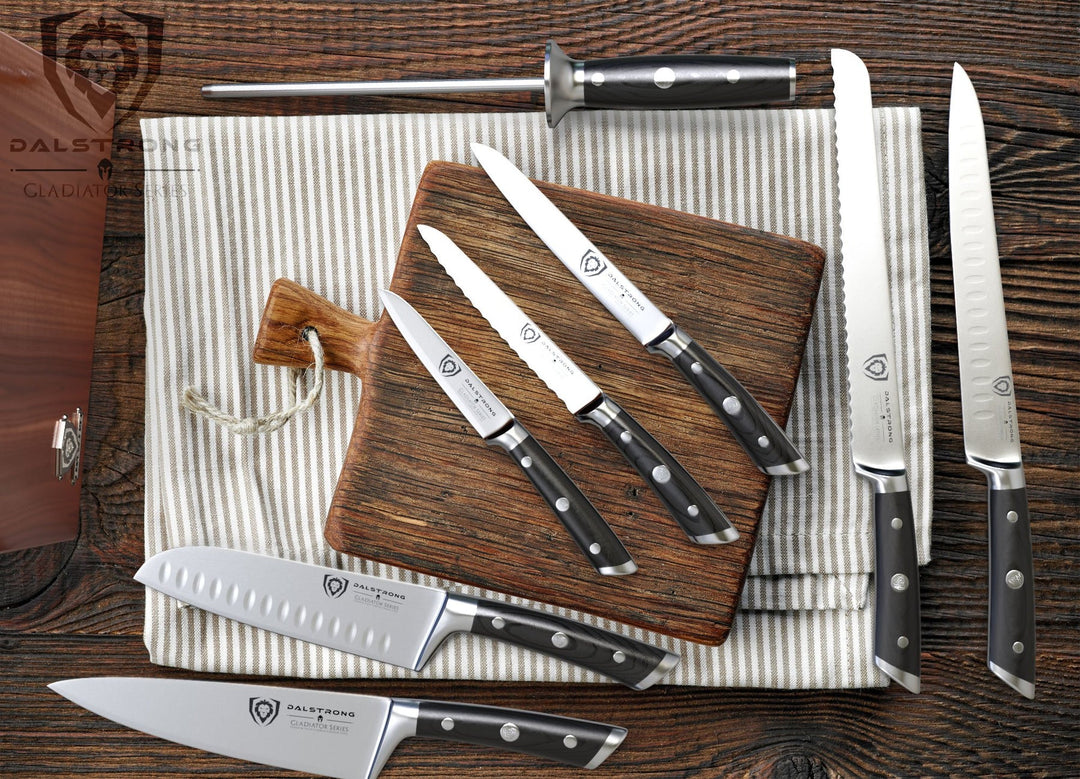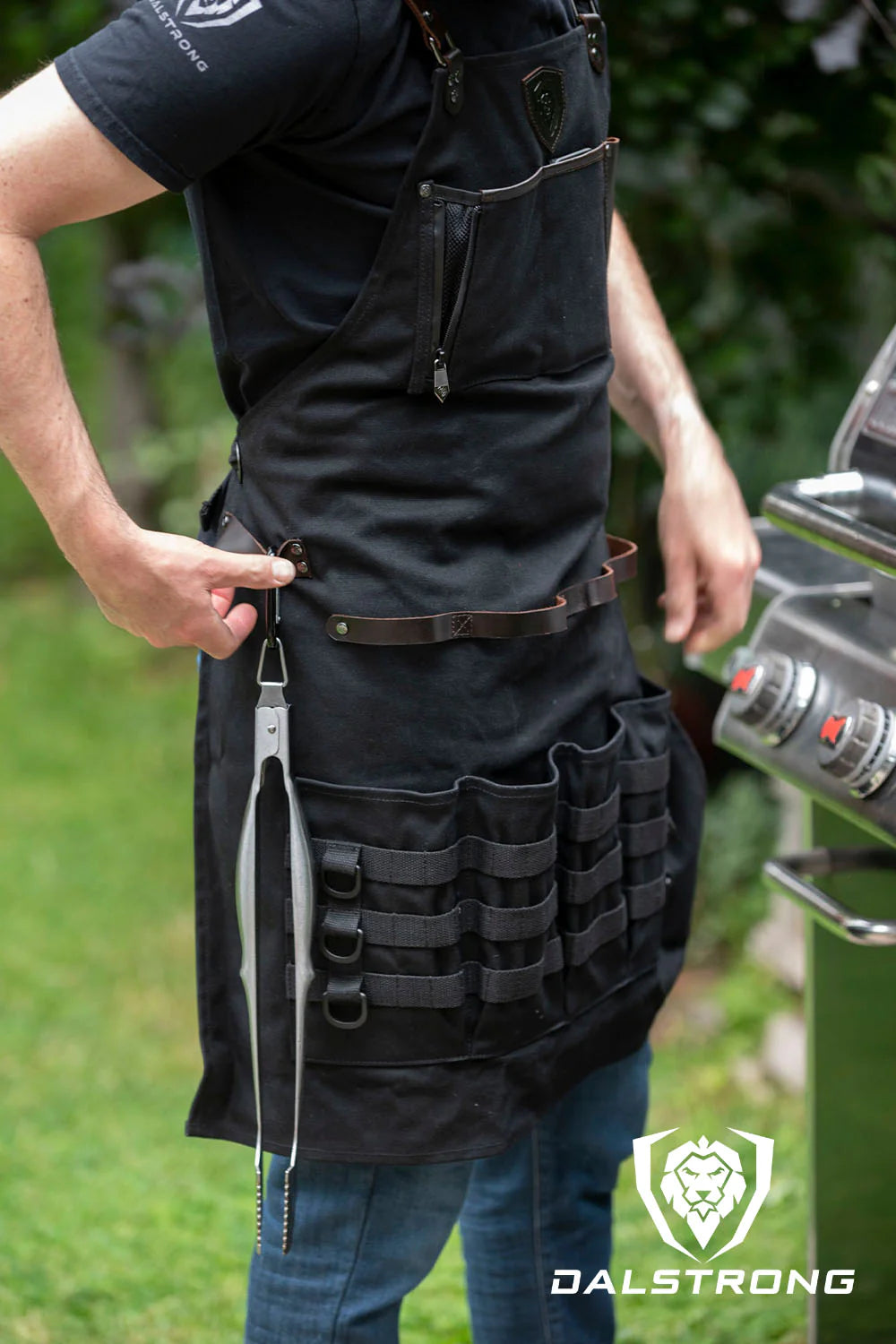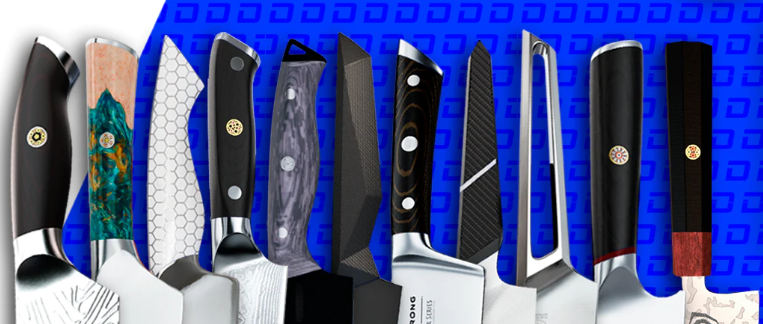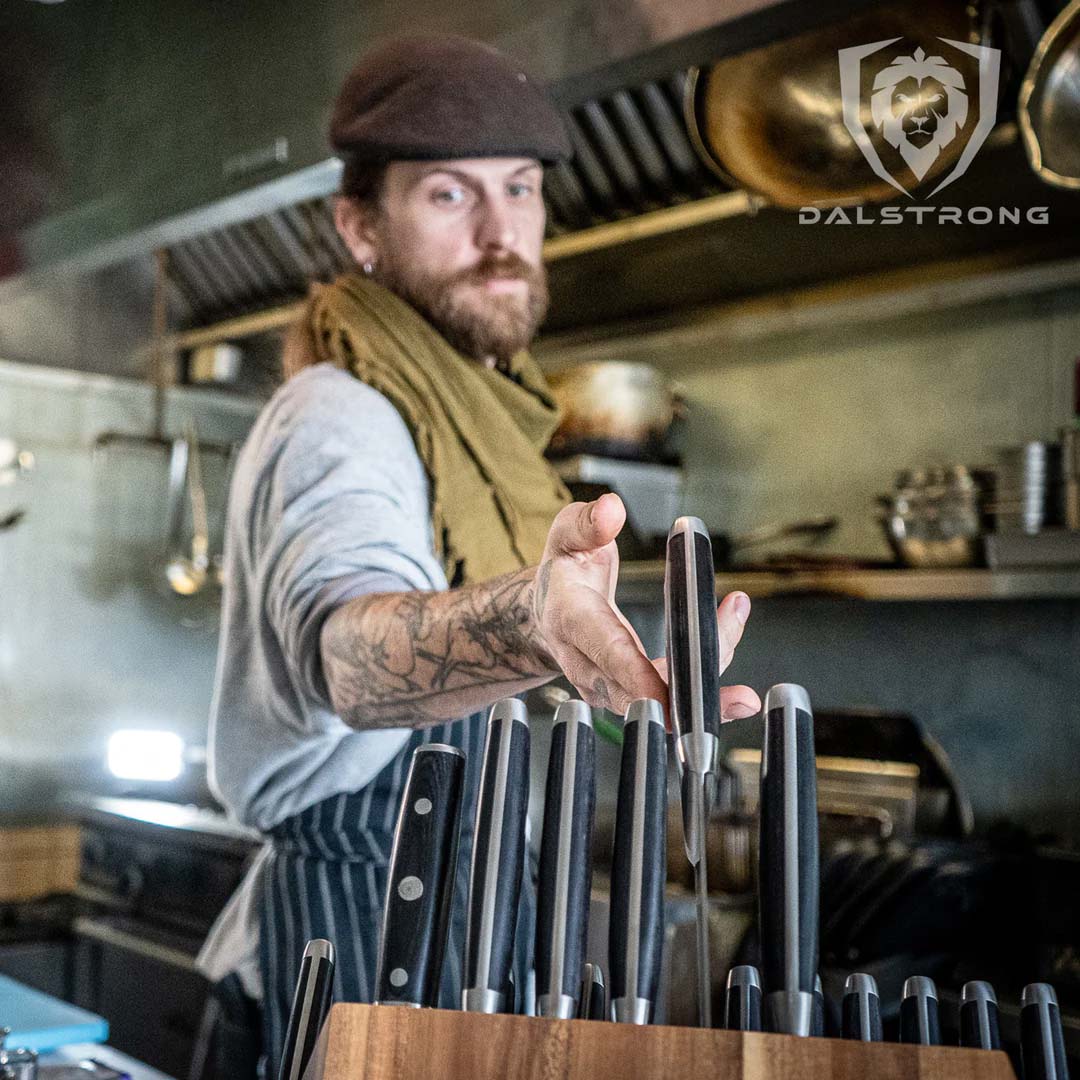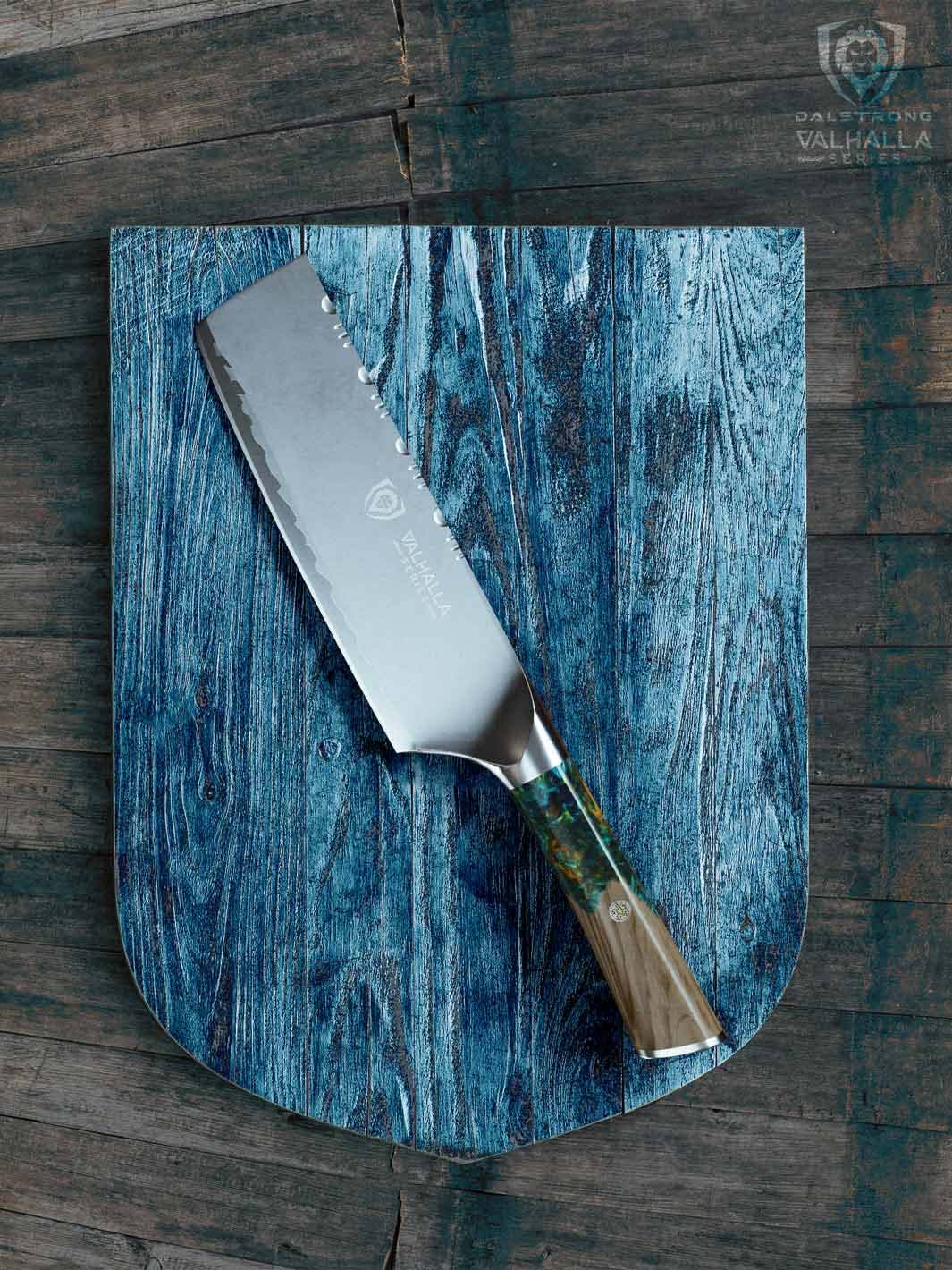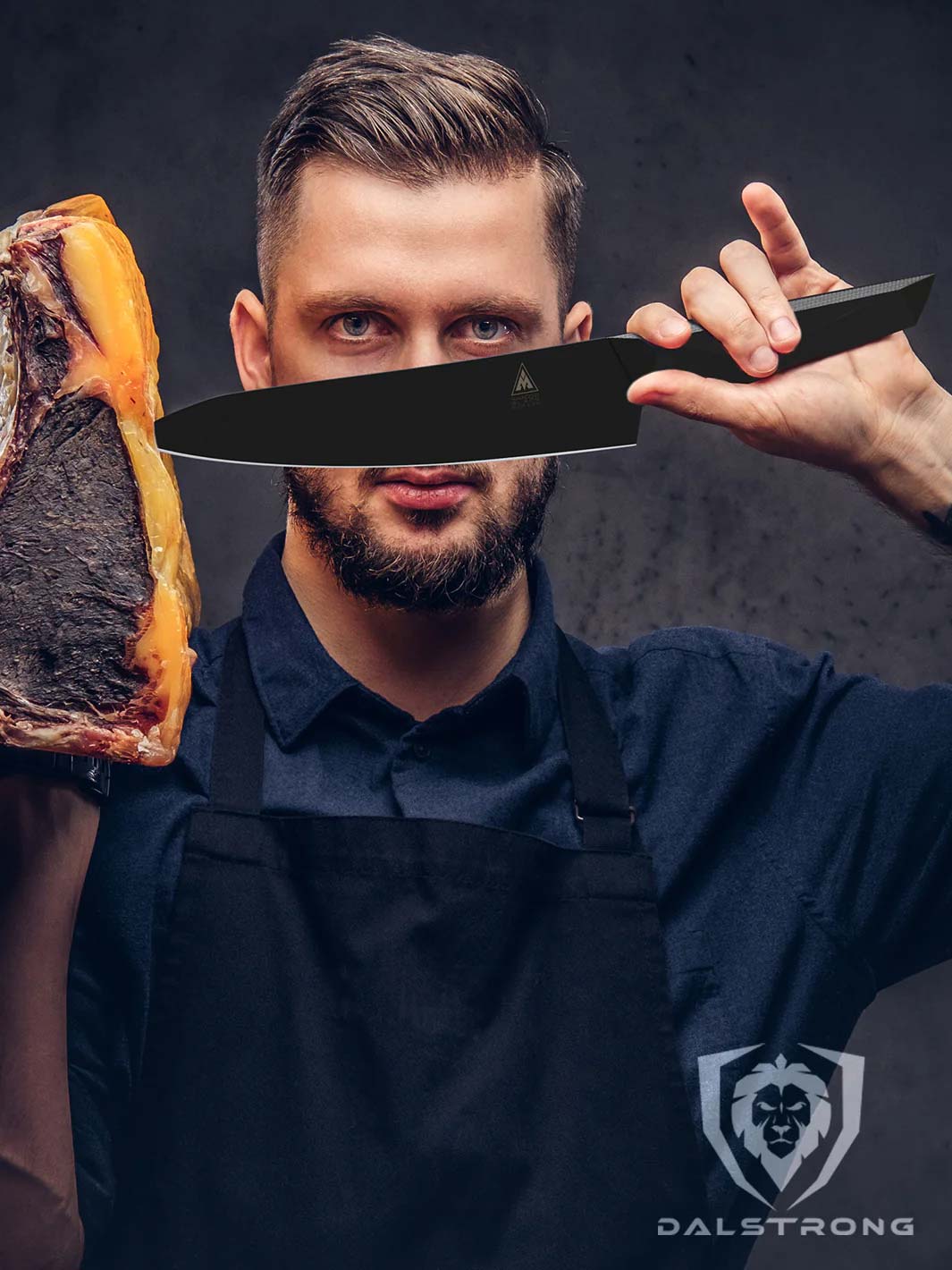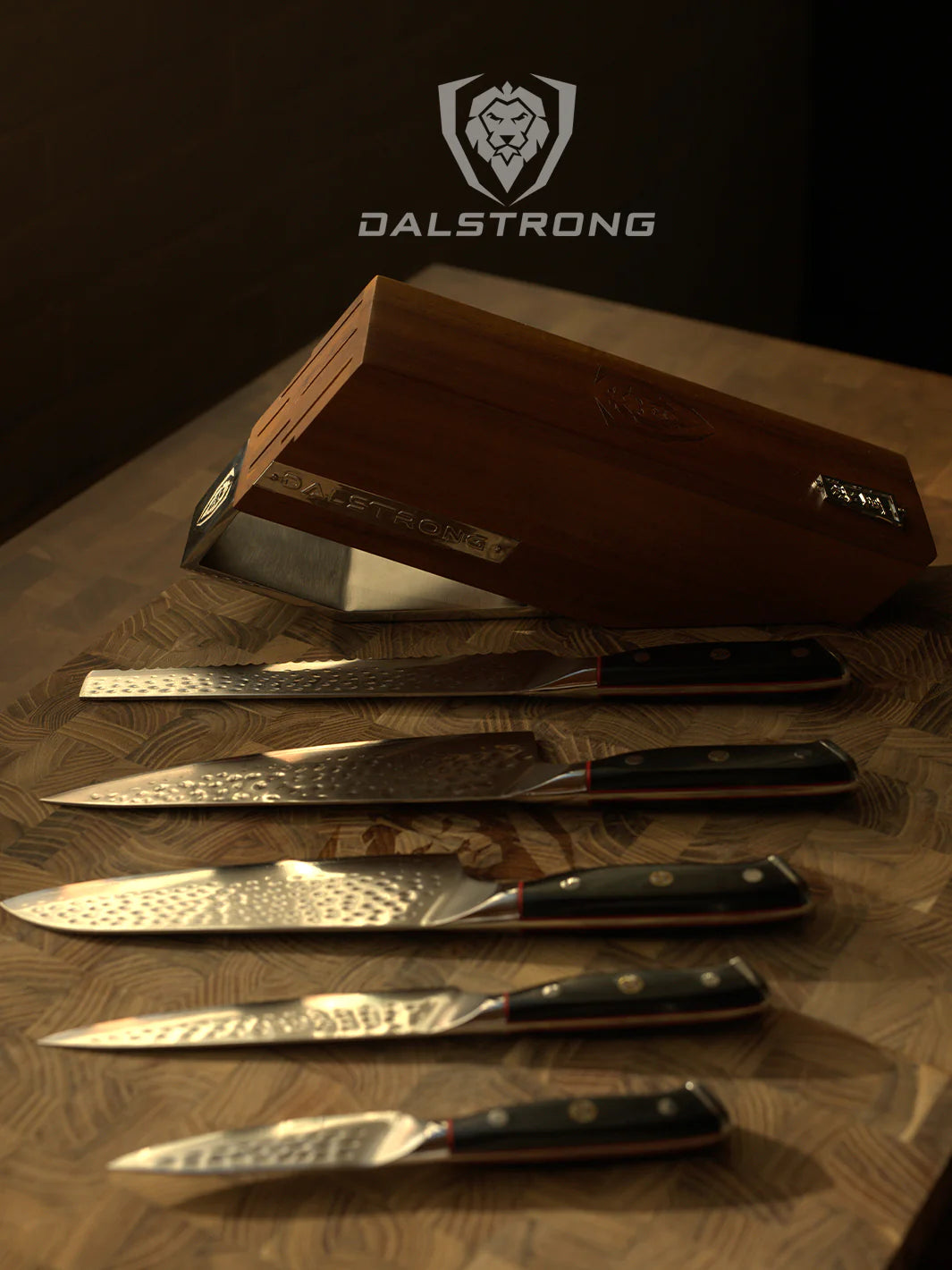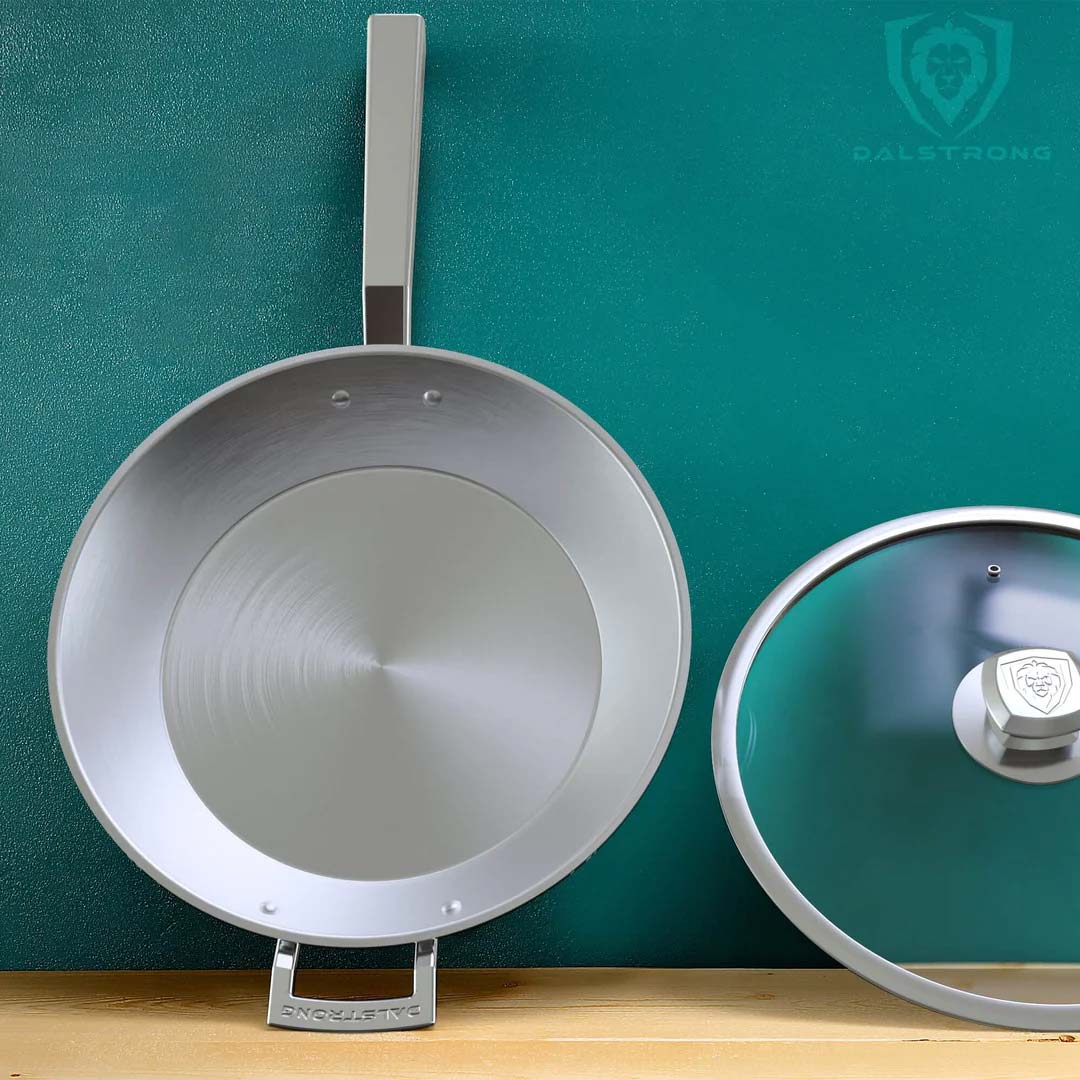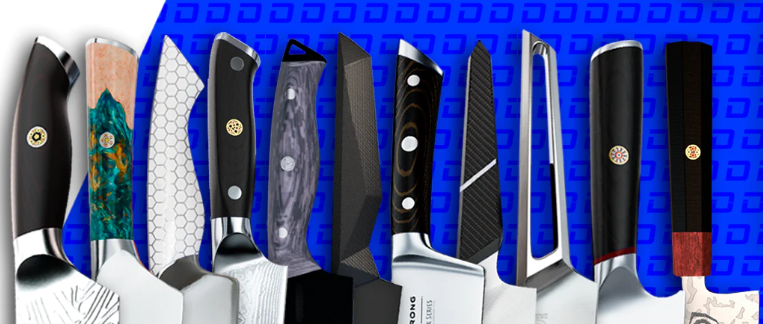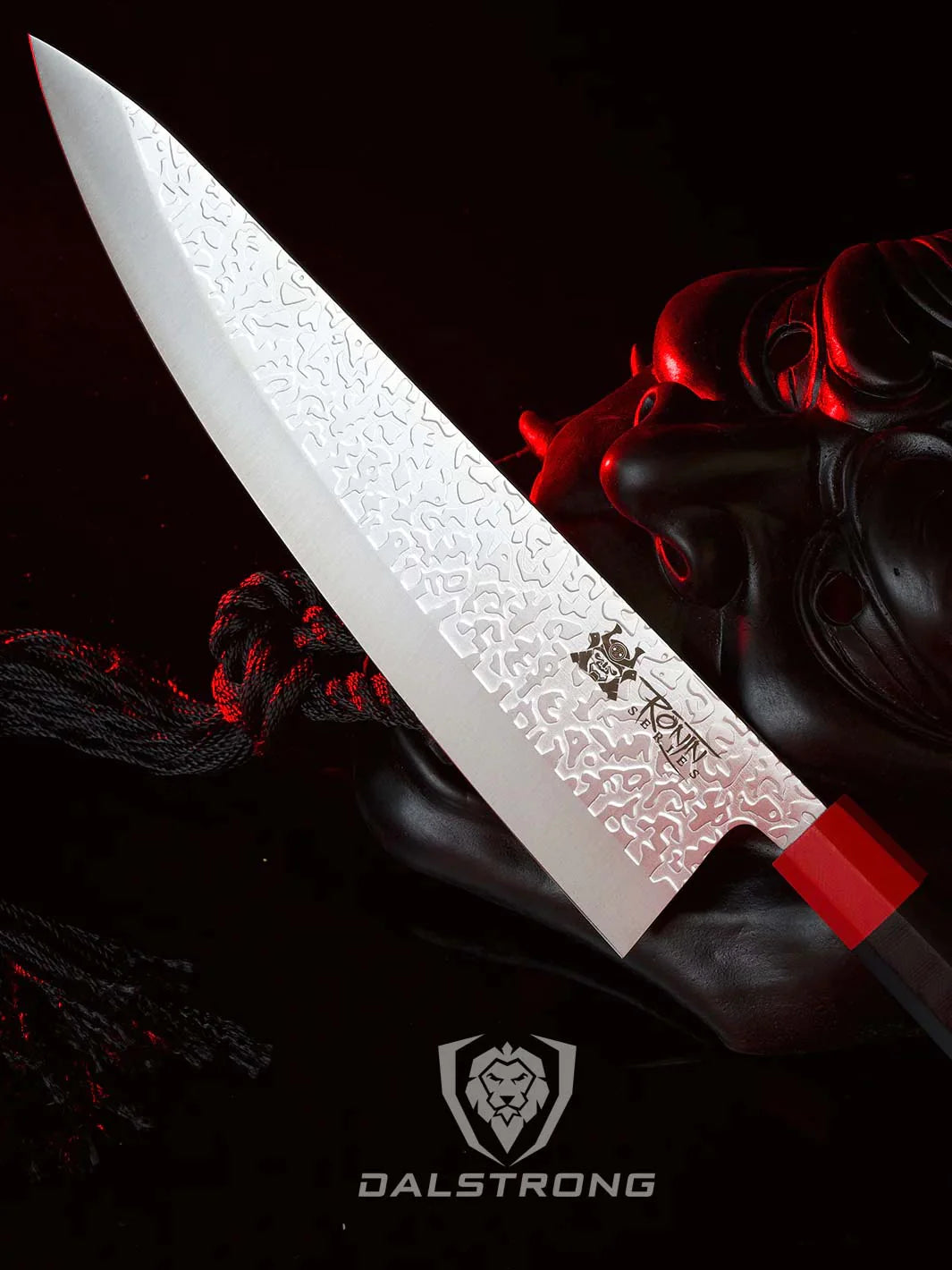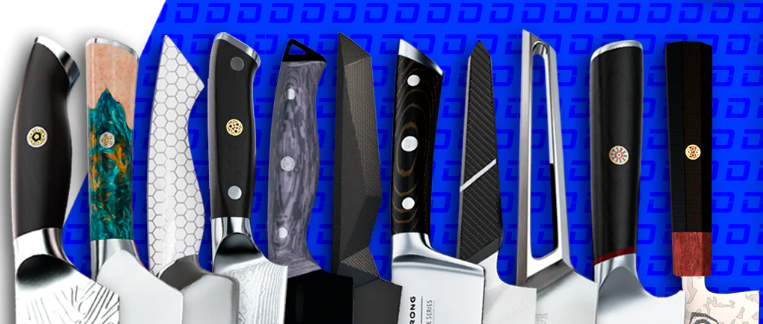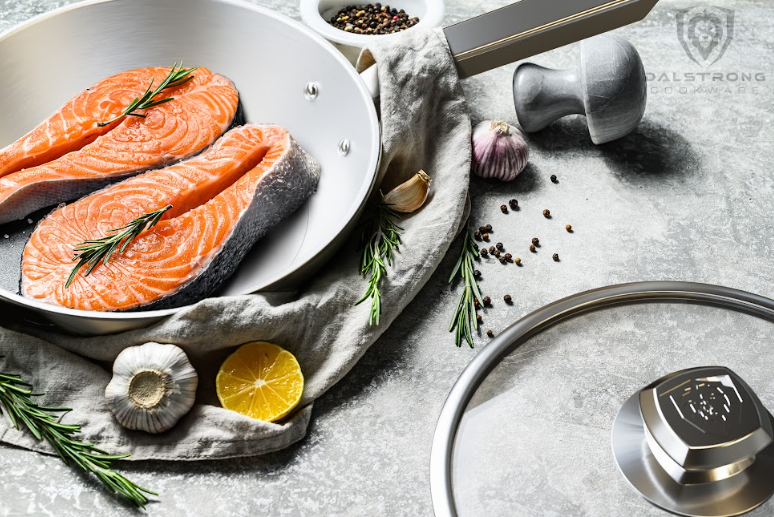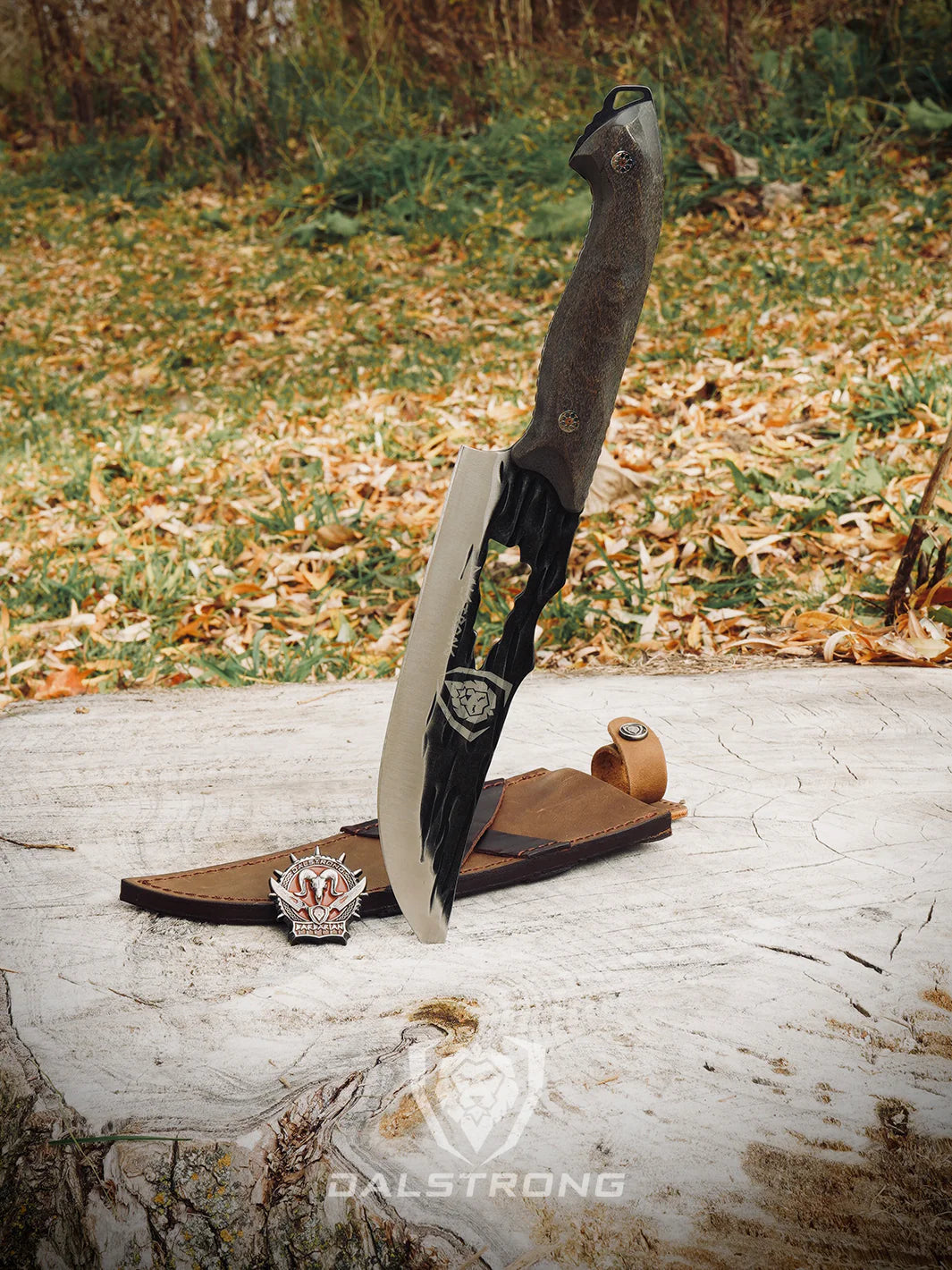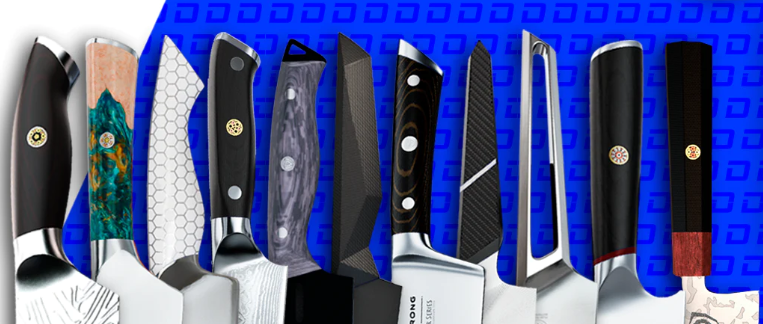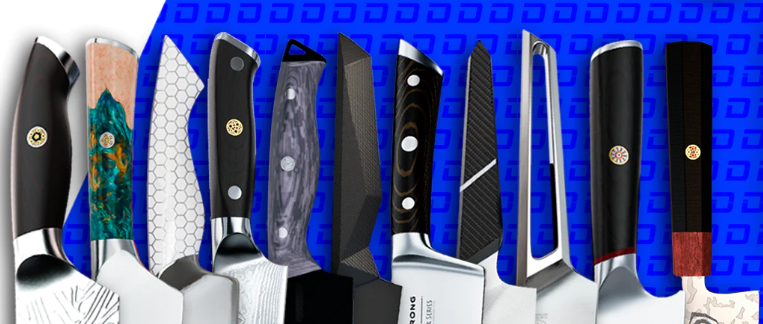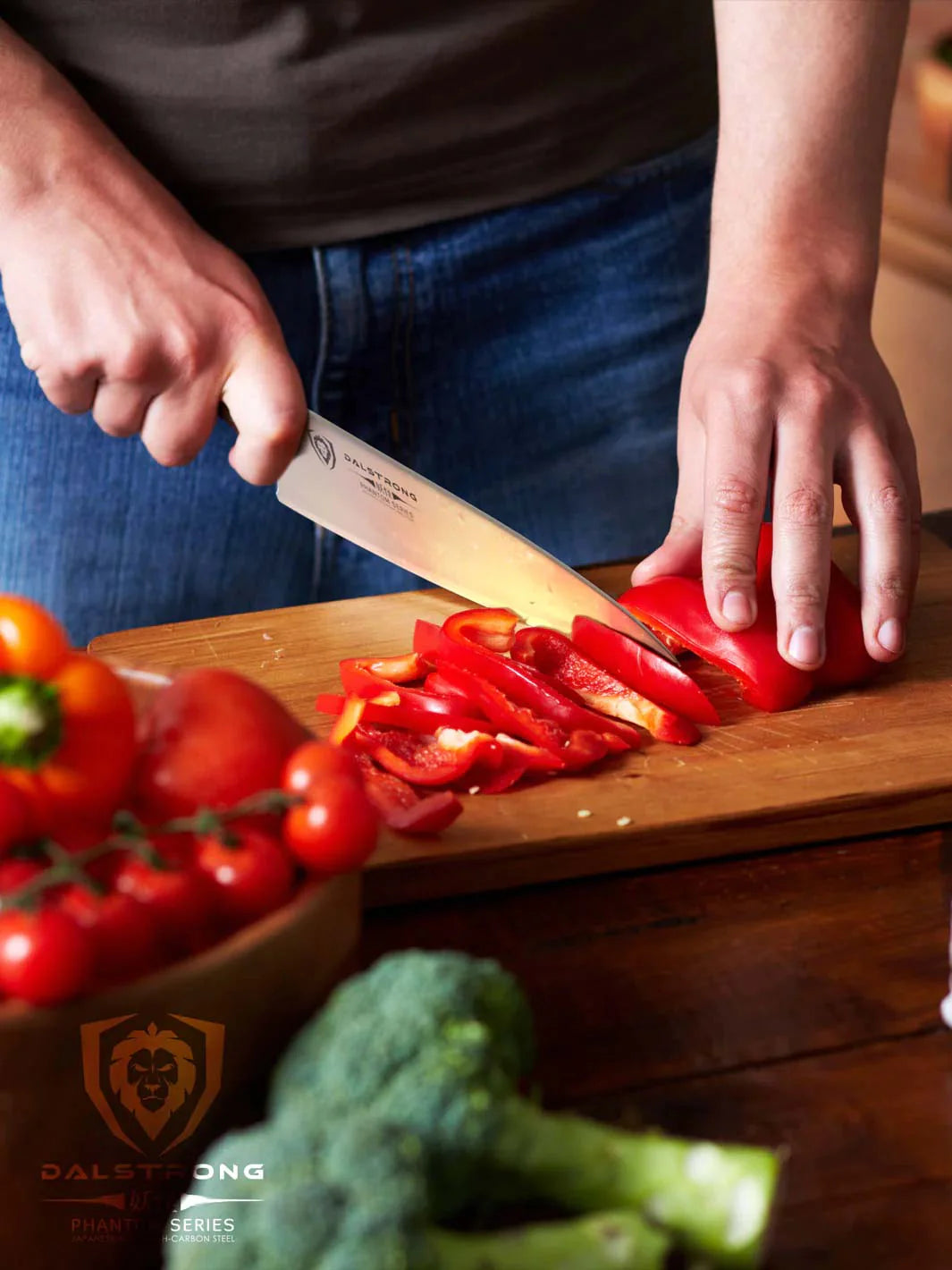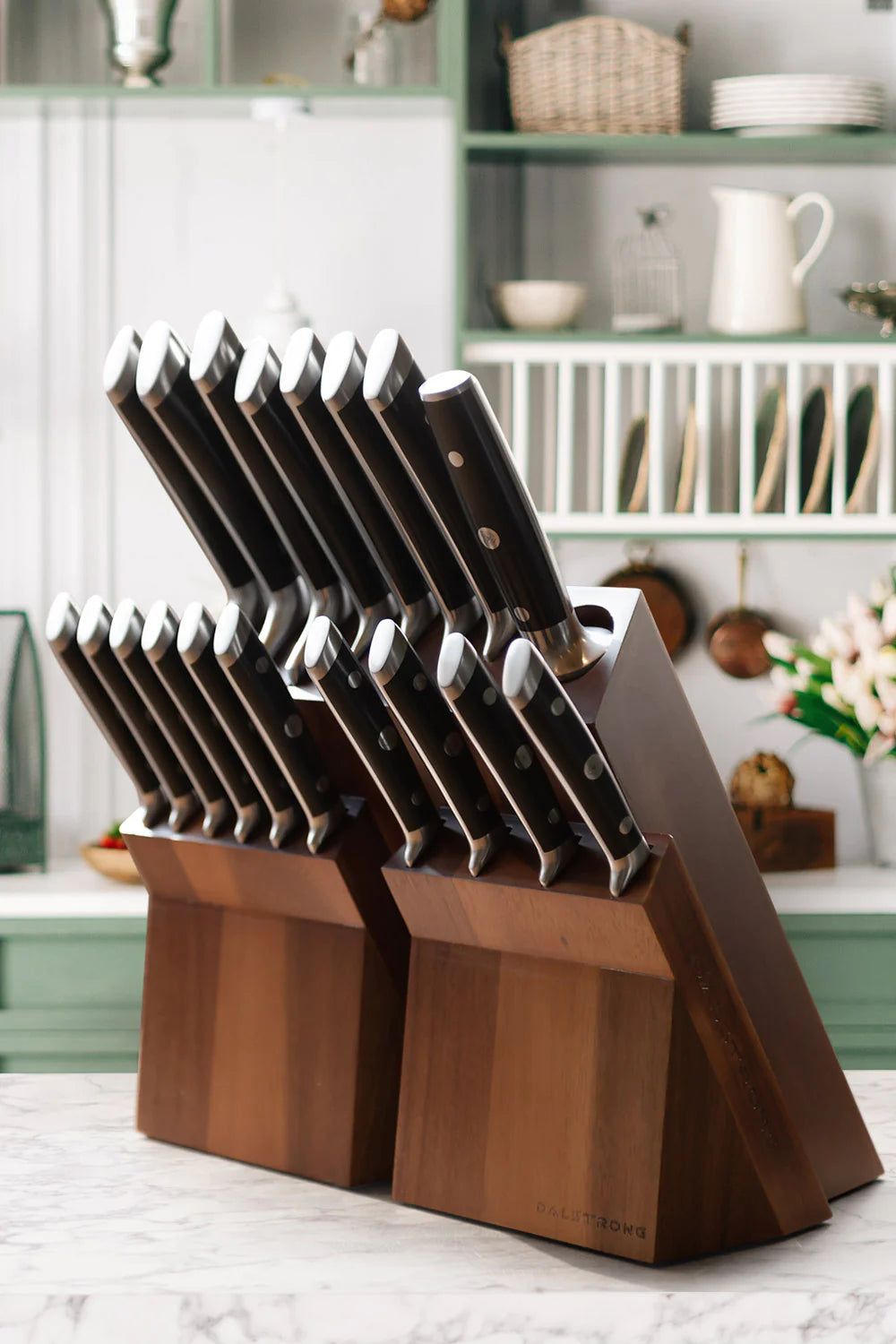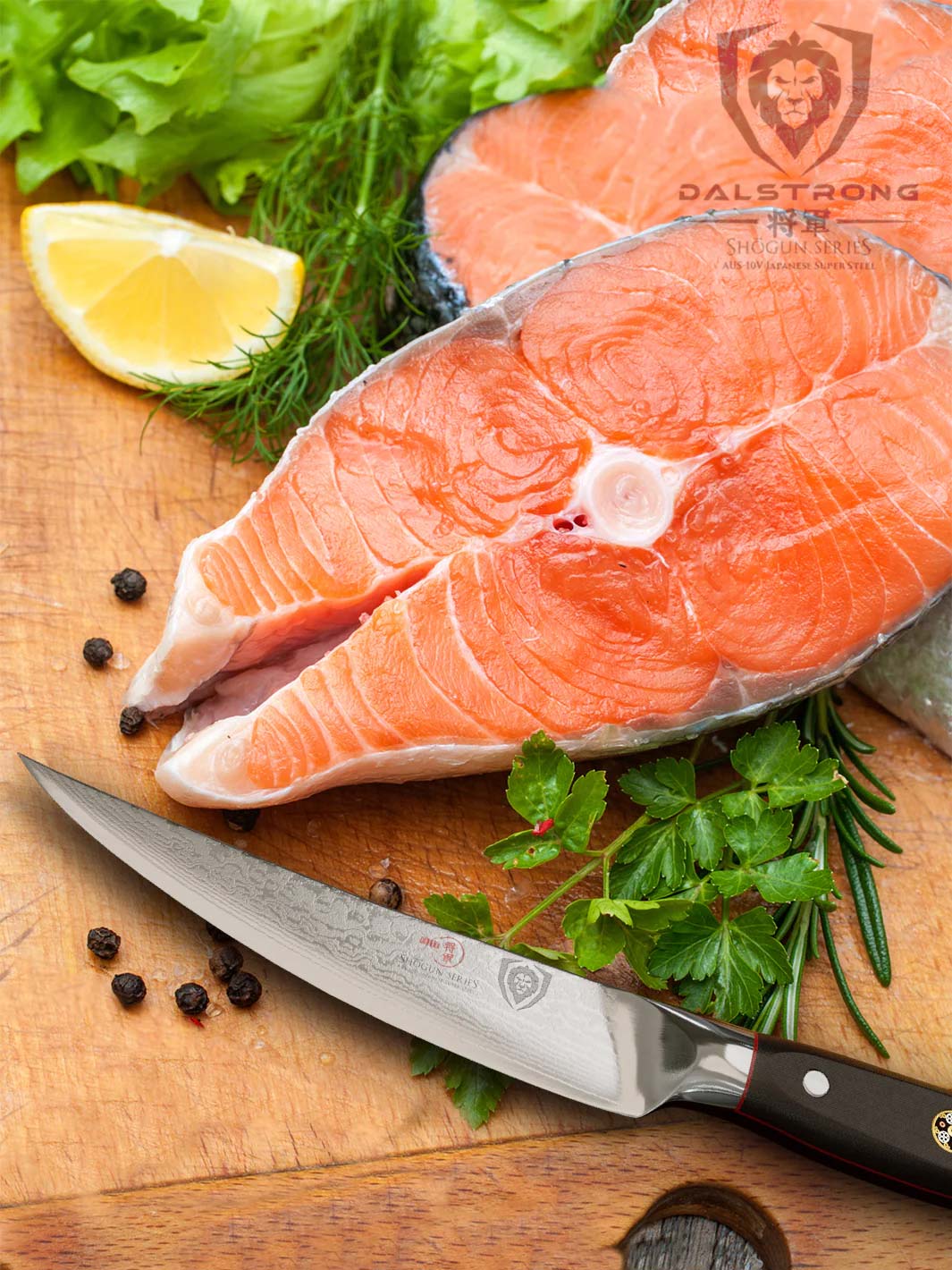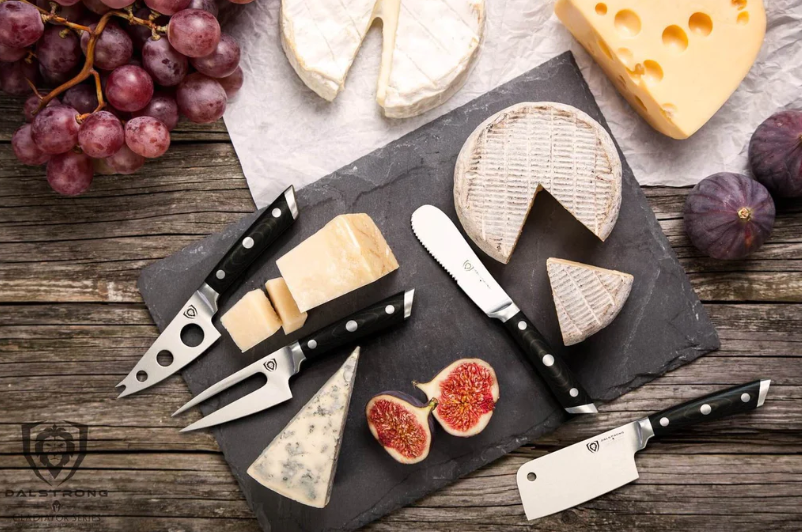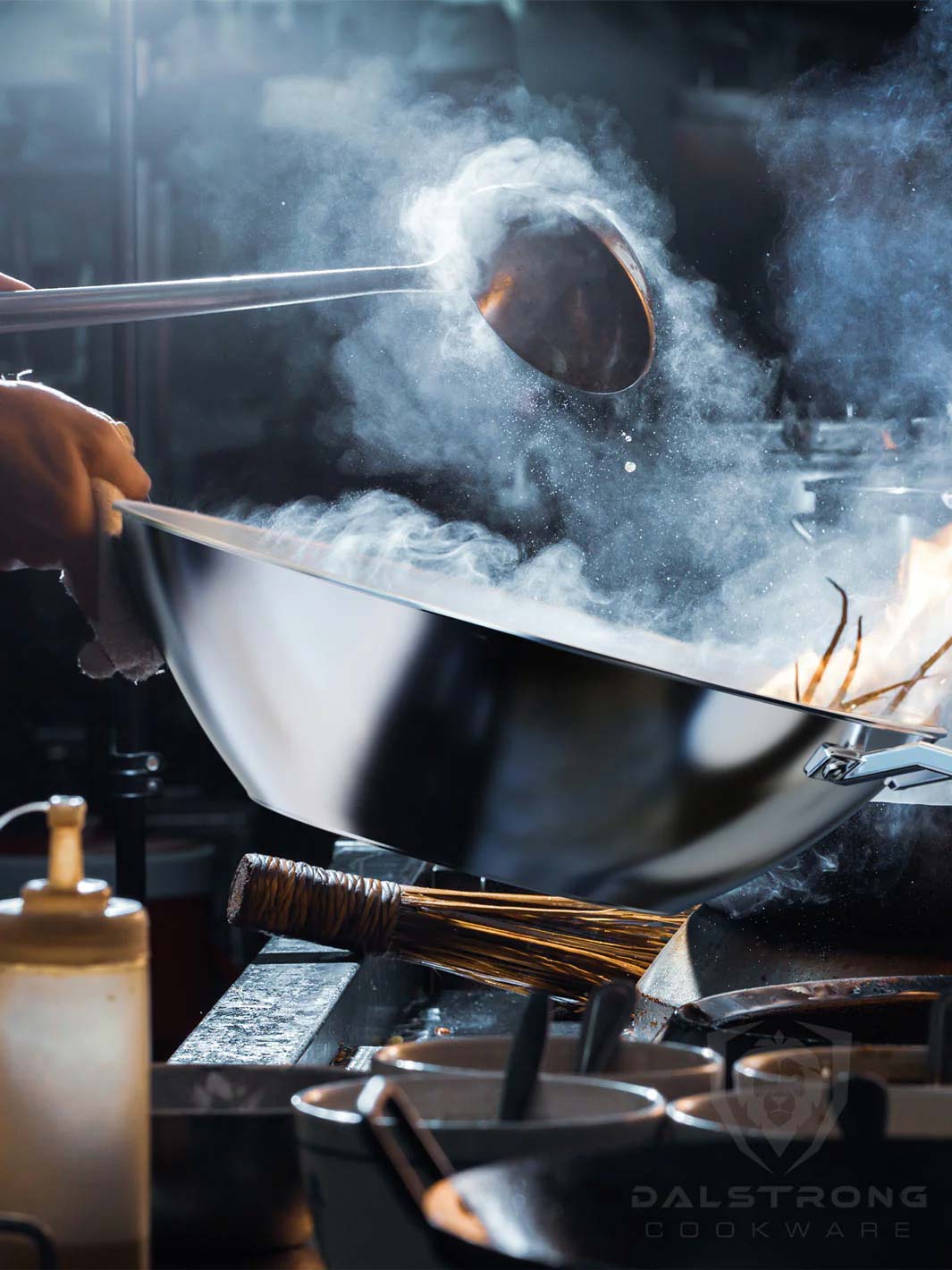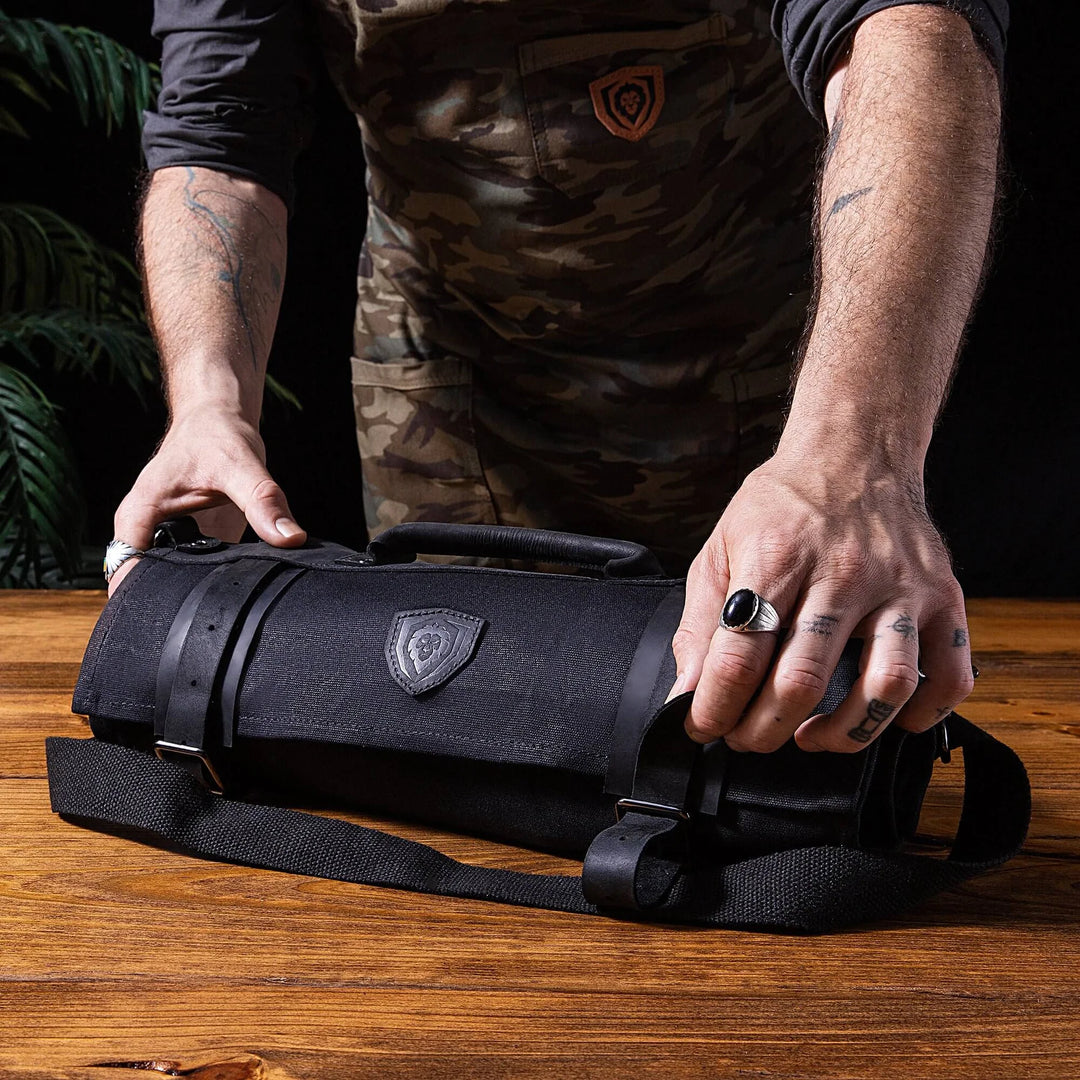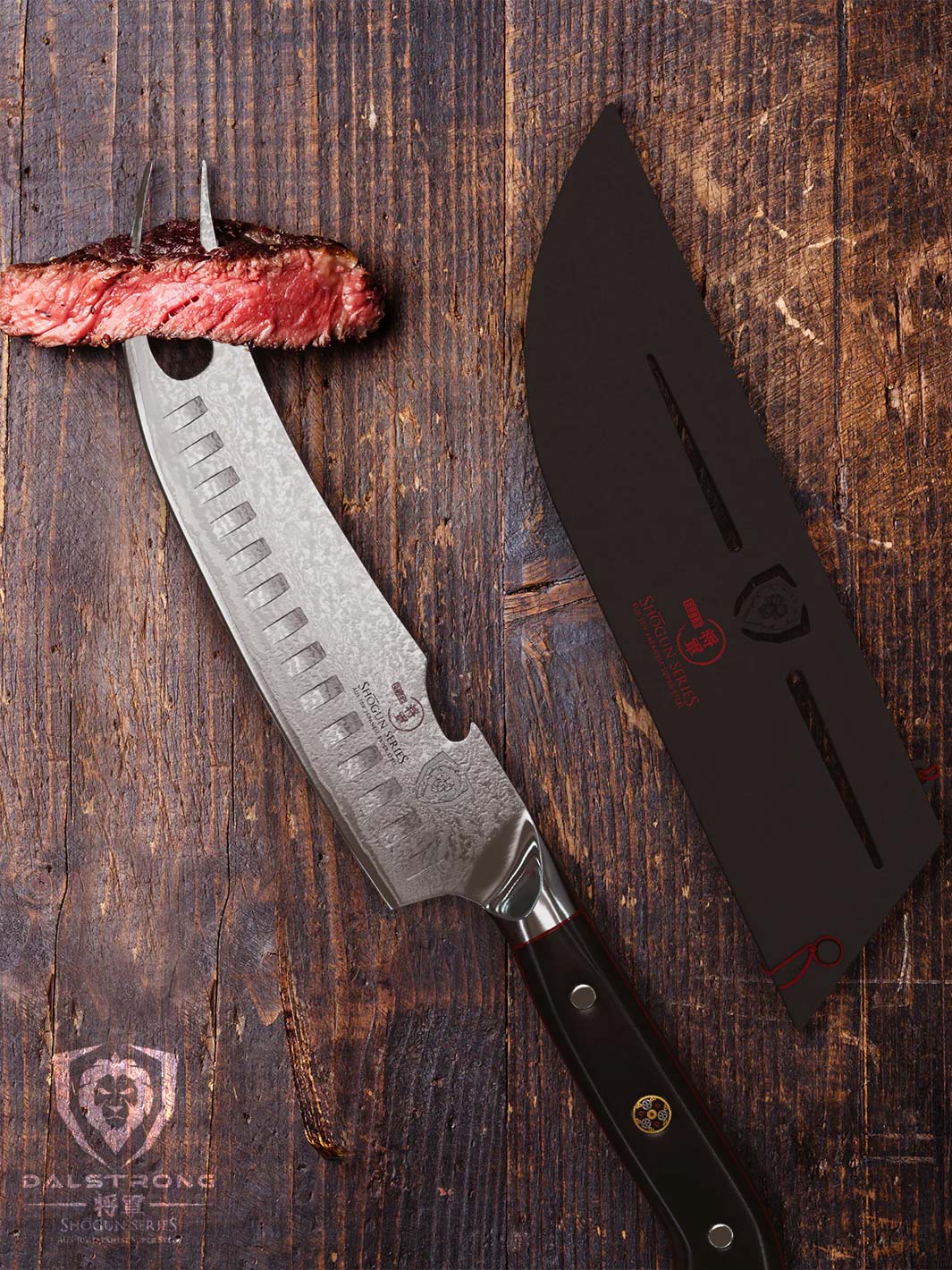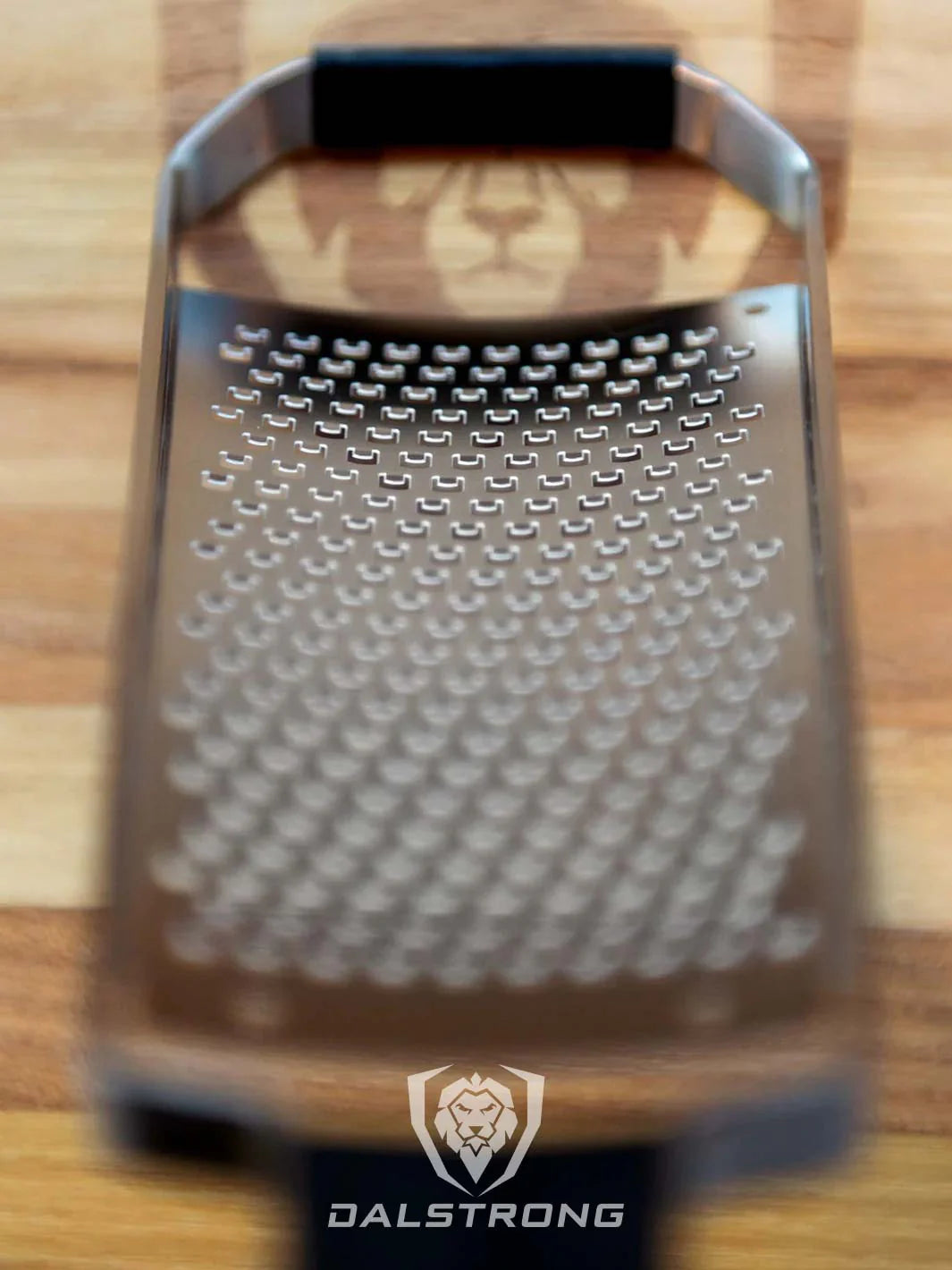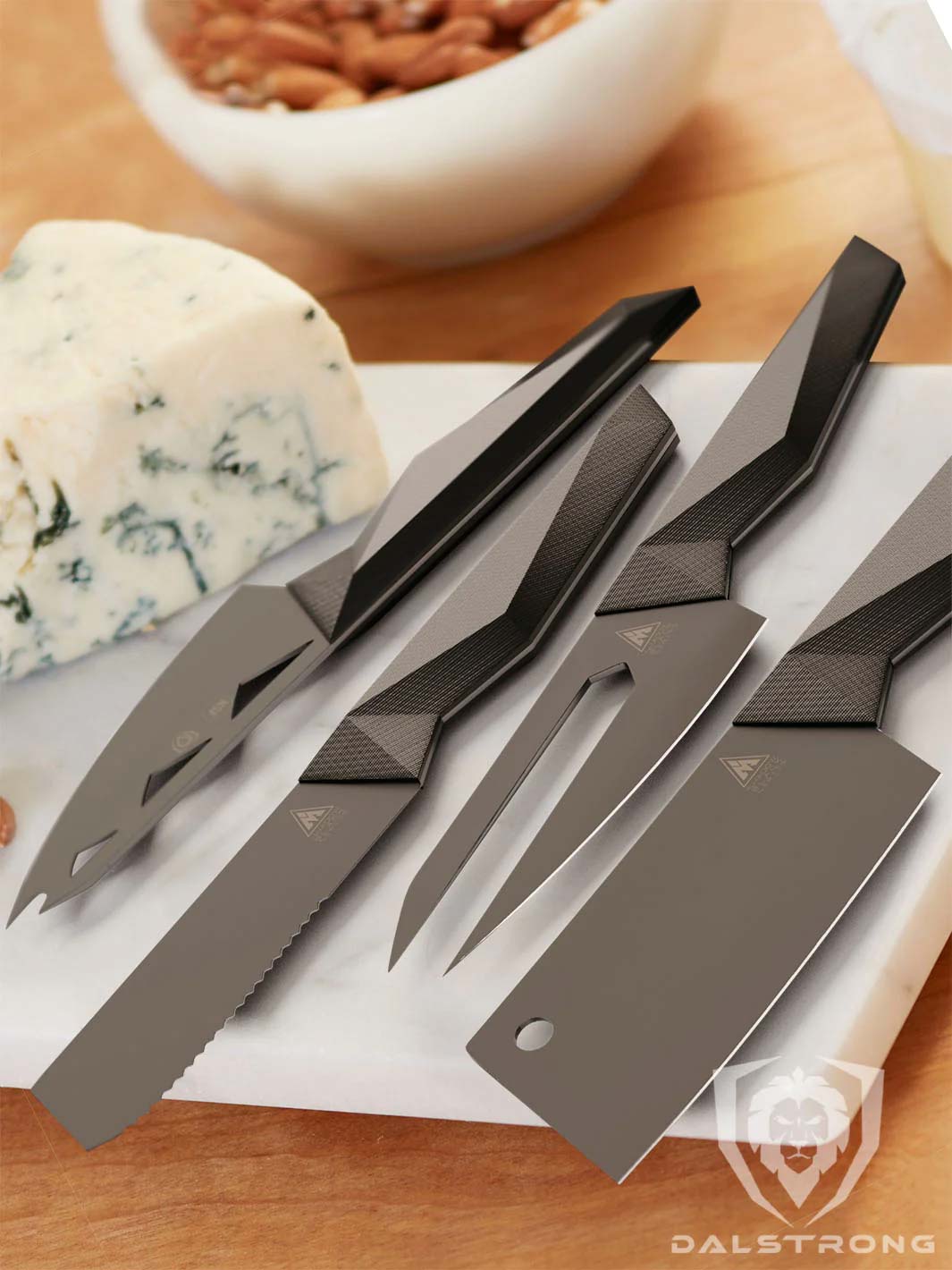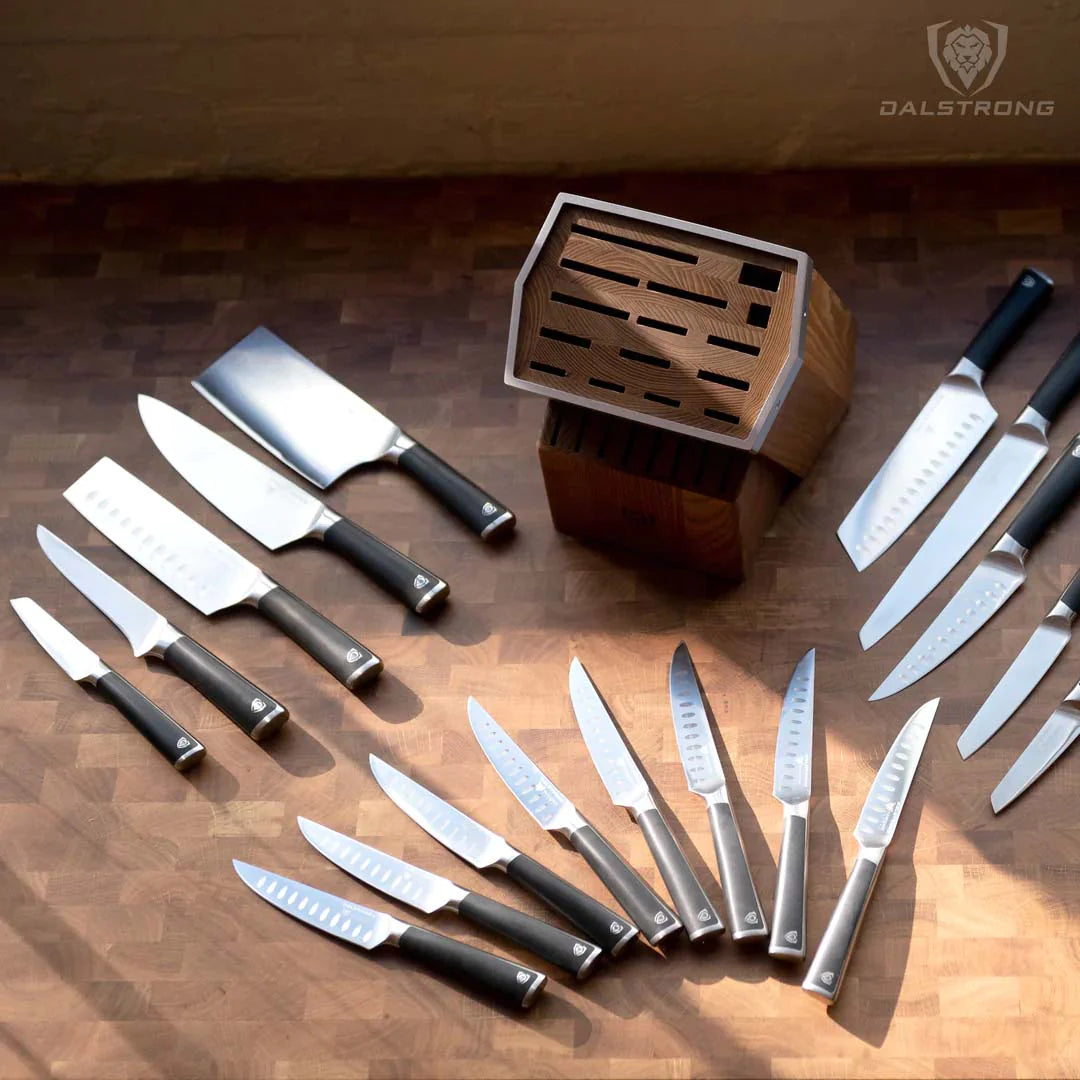The Very Best Way To Sharpen A Knife
In home cooking, all the best easy recipes in the world won't help you if the tool you're using is a blunt knife. Let's delve into the world of knife sharpening and learn how to sharpen that edge.
1. Why Do You Need to Keep Your Knives Sharp?
Whether you're the family handyman, a home cook, or a professional chef, you know that your knife has to be as sharp as possible in order to be as useful as possible. Using dull blades can turn a once satisfying experience into a rough ordeal, affecting not just the aesthetics of your dishes, but also the taste, texture, and even cooking times.
When it comes to cooking, a blunt knife can cause quite a bit of damage. Instead of slicing cleanly through food, a dull blade tears or crushes, disrupting the cell walls and leading to quicker oxidation and degradation of the ingredients. This could affect the visual appeal of your dishes, with ragged and uneven cuts. But more importantly, it may also impact the taste and the overall cooking process.
A cleanly cut vegetable or piece of meat cooks evenly and presents well on the plate. In contrast, uneven chunks may cook at different rates, potentially messing up your well-planned recipes.
Maintaining your knives sharp brings a wealth of benefits
Sharp knives are a joy to use. They glide effortlessly through food, making your chopping, dicing, and slicing tasks more efficient and far less tiring. You won't have to struggle with the blade or exert unnecessary force, which not only saves you energy but also improves your cutting techniques. This becomes particularly evident when working with delicate ingredients like herbs or soft vegetables, where a sharp knife can make the difference between precision cuts and a squashed mess.
Safety
Safety is another important reason to keep your knives sharp. It may seem unreasonable, but a sharp knife is actually safer than a dull one. Dull knives require you to apply more force when cutting, increasing the likelihood of the blade slipping off the food and causing an accident. Sharp knives, in contrast, need less force, providing better control and precision, reducing the risk of injuries.
Satisfaction and enjoyment
Last but not least, there's the satisfaction and enjoyment factor. Sharp knives can transform food preparation from a chore into a delightful and fulfilling experience. Each clean slice and perfect dice can bring a sense of accomplishment, enhancing the joy of cooking.
According to the test kitchen trials and feedback from both home cooks and professional chefs, sharp knives significantly improve the cooking experience, making kitchen work way more efficient and enjoyable.
So as you embark on the journey of knife sharpening, remember: keeping your knives sharp is not a frivolous endeavor. It's a commitment to better tasting food, safer and more efficient cooking practices, and a more enjoyable kitchen experience.
2. Types of Knife Sharpeners
#1000 / #6000 Grit Combo with Oak Storage Box Portable Whetstone Kit Dalstrong
So now you know why you should keep your knives sharp. How do you go about it? Choosing the right knife sharpener can seem overwhelming and scary, with options ranging from budget-friendly manual sharpeners to advanced electric models.
Manual sharpeners
Manual sharpeners are affordable and compact, ideal for those with limited kitchen space. They usually have multiple slots of varying coarseness to refine your knife's edge and are straightforward to use, pretty popular among home cooks.
Electric sharpeners
Electric sharpeners are quick, convenient, and give consistent results, making them a great choice for frequent knife users. Despite a higher cost, they save time and effort in the long run and have built-in guides ensuring optimal sharpening angles, reducing blade damage risk. According to experts, however, they can take away a bit too much material, so be judicious when using them.
Honing rods
Then there's honing rods. If you're anything like me, you thought honing rods were sharpeners, but that's actually not the case. However, they do maintain the sharpness of an already sharpened blade by realigning the microscopic teeth along the blade's edge. Regular honing can extend the life of your sharp edge and delay the need for full sharpening.
Check out our video on how to use a honing rod.
Whetstones
Sharpening stones, or whetstones, offer the most control and are preferred by professional chefs for their precision. They come in different materials and grits for repairing and polishing dull blades, but they require more skill as you manually hold the knife at the correct angle. Sharpening knives with a whetstone can seem intimidating, but you'll eventually grow to love the process; many find it relaxing and therapeutic!
The choice of sharpener depends on your knives, their usage frequency, your budget, and comfort with the sharpening process. Some knives, like serrated ones, need special sharpeners. So it's crucial to research and select a tool fitting your needs. Whether you're a home cook or a professional, understanding sharpeners ensures your kitchen is equipped with sharp cutting tools.
Read about how to hone and sharpen a knife, here.
3. Best Way to Sharpen a Knife

Before we dive into the nitty-gritty of the sharpening process, it's important to underscore the difference between honing and sharpening, as these terms are often used interchangeably but represent two distinct techniques. As we mentioned earlier, honing involves realigning the blade's edge and is a maintenance task you'd perform more frequently. Sharpening, on the other hand, involves removing a tiny bit of metal from the blade to create a new, sharp edge. This is done less often but is vital for maintaining a sharp, effective knife.
Now, let's slice into the best way to sharpen your knives with a whetstone:
Preparing the sharpener
If you're using a sharpening stone, the first step is to soak it in water for about 10-15 minutes until bubbles cease to form. The soaking process ensures that the stone won't absorb the metal particles shaved off from your knife during sharpening, preserving the integrity and effectiveness of the stone.
Finding the right angle
This is where an angle guide can prove invaluable, especially for beginners. Most kitchen knives, whether a chef's knife or a utility knife, should be sharpened at approximately a 20-degree angle. This provides an ideal balance between sharpness and durability for common kitchen tasks. Holding the knife at this angle against the sharpener ensures you're shaving the metal at the optimal point, refining the blade's edge for the best performance.
Sharpening process
Once the angle is established, it's time to start the sharpening. Hold onto the knife handle securely with your dominant hand and keep the sharpening stone or tool steady with your nondominant hand. Begin at the base of the knife, nearest the handle. Apply a consistent pressure, and drag the blade down and across the stone or through the sharpener in a smooth, sweeping motion. Imagine you're trying to slice a thin layer off the top of the stone. This pulling motion, often described as "dragging the blade," enables even sharpening across the entire length of the knife edge.
Checking the sharpness
After a few strokes, pause and feel along the edge of the blade for a "burr." This is a tiny lip of metal that curls over as you sharpen one side, indicating that you've sharpened enough on that side. The presence of a burr signifies that it's time to repeat the process on the opposite side of the blade. Once you've formed a burr on both sides, your knife is almost ready. The final step is to remove the burrs by lightly dragging the blade over the sharpener a couple more times.
Check out our video on how to sharpen your knife like a pro.
Electric knife sharpening and manual knife sharpeners follow a different process that is much more straightforward, thus requiring less skill (which is, unfortunately, reflected in the results you will get from those types of sharpeners).
Remember: learning how to sharpen a knife with a stone takes time and patience, but it's an incredibly rewarding skill. Each session will help you develop a feel for the knife and the whetstone, enabling you to achieve better and more consistent results. It may seem a bit daunting at first, especially with various knife sets requiring different techniques, but practice makes perfect! Before long, you'll be wielding your sharpening tool like a professional, breathing new life into dull blades and taking your cooking experience to a whole new level.
4. Essential Dalstrong Knife Sharpeners
Let's take a look at some great tools from acclaimed knifemaker Dalstrong that'll bring your sharpening game to the next level.
1. #1000 / #6000 Grit Combo with Oak Storage Box | Portable Whetstone Kit
This awesome whetstone kit is a fusion of style and function; an elegant, mobile solution for keen edge maintenance. It blends top-tier sharpening features with an aesthetically appealing design.
PROS:
- This kit has a dual-grit functionality (#1000 and #6000), which offers flexibility for both sharpening and polishing compared to single-grit alternatives.
- The oak case offers a distinctive appeal (it looks truly beautiful) while also providing secure housing for the stones, unlike kits with more basic storage.
- It is an ideal choice for users who prefer a balance of utility and aesthetic appeal, compared to more function-focused kits.
- Its straightforward operation caters to both novice and experienced knife owners, unlike kits that may require more advanced skills.
CONS:
- Compared to more compact sets like the Nagura Stone & Rust Eraser kit listed below, its larger case could slightly compromise portability.
2. #1000 / #6000 Grit with Nagura Stone & Rust Eraser | Premium Whetstone Kit
This all-in-one kit provides a comprehensive solution for knife care, extending beyond sharpening and polishing to include additional functionalities.
PROS:
- The inclusion of the Nagura leveling stone sets this kit apart, adding versatility not found in simpler sets like the one listed above.
- Its construction from top-tier corundum offers exceptional durability and performance, exceeding sets with lesser quality materials.
- The kit excels at restoring knives to pristine condition, removing corrosion and scuff marks – a feature lacking in many competitors.
- The beautiful acacia wood base not only enhances its aesthetic value but also provides sturdy support during use, compared to kits without a designated base.
CONS:
- Those seeking a more streamlined option might find the Portable Whetstone Kit more suitable, as this kit includes the possibly unneeded Nagura stone.
- Despite its comprehensive features, its larger size demands more storage space than more compact alternatives like the Premium Whetstone Set listed below.
3. #3000 / #8000 Grit | Premium Whetstone Set
This advanced sharpening kit is ideal for reviving and refining a variety of blades. It offers superior value, boasting features typically found in more expensive alternatives.
PROS:
- This kit is uniquely versatile, perfect for honing both German and Japanese-style kitchen knives, unlike kits with a narrower focus.
- The combination of #3000 and #8000 grit stones caters to both intermediate and fine sharpening needs.
- Its larger stone surface area enhances sharpening efficiency, an advantage over smaller stone kits.
- Unlike many similar kits, this kit offers superior value, providing high-end features at a competitive price.
CONS:
- For users interested in an even smoother finish, kits with higher grit stones like the Nagura Stone & Rust Eraser Kit might be preferred.
- The does not include an acadia wood base like some other options do..
4. Honing Steel 10" | Gladiator Series | NSF Certified | Dalstrong
Now let's talk about honing rods. This incredible 10" honing rod from Dalstrong's acclaimed Gladiator Series is your professional solution for keeping your blade edges well-aligned and in top condition. This honing steel, made with high-quality stain-resistant carbon steel, is designed to ensure that your blades are always ready to perform at their best. The handcrafted rod, secured with triple rivets, is beautifully finished with a military-grade G10 handle for solid grip and ergonomic comfort. With 10 inches of length, this tool is suitable for most knife sizes and has grooves designed to realign and restore the blade's edge.
PROS:
- This honing steel offers a professional-level tool for maintaining the perfect alignment of your blades, making it a worthy choice compared to the ceramic variant for those who prefer traditional carbon steel.
- Handcrafted from stain-resistant carbon steel, it is inherently durable and resistant to wear, ensuring long-term use in both professional and home kitchens.
- The ergonomic and solid-grip military-grade G10 handle offers comfortable and safe usage, even during extended honing sessions.
-
It is versatile, working well with a range of knife sizes without being too cumbersome, unlike ceramic models that might not offer the same level of user-friendliness.
CONS:
- While the carbon steel honing rod excels in realigning the blade's edge, it might not provide the same level of gentle sharpening that its ceramic counterpart can offer.
- In terms of visual appeal, some folks prefer the look of the black ceramic coating on the honing steel listed below.
5. Honing Rod 10" | Ceramic Coating | Dalstrong
Here we have a premium honing tool designed to gently bring your knives back to their optimum performance. It's outfitted with a G10 handle and Dalstrong's unique, scratch-free, black ceramic coating. Handcrafted with a high-carbon stainless steel core and Dalstrong’s unique black ceramic coating, this honing rod is suitable for use on valuable steels of high Rockwell Hardness, often found in Japanese cutlery.
PROS:
- Dalstrong's Ceramic Honing Rod offers a gentle yet effective way of honing your knives, making it a great option for those who want to avoid the potentially harsher sharpening process of a carbon steel honing steel.
- The unique, scratch-free black ceramic coating is an excellent feature for those who value the aesthetics of their tools.
- The silicon-covered tip enhances stability during honing, offering an advantage for novice users over other models without this feature.
- Its construction, including the high-carbon stainless steel core and ceramic coating, make it particularly suited to honing high-quality Japanese blades, giving it an edge for enthusiasts of Japanese style knives.
CONS:
- While the ceramic coating provides a gentle and scratch-free honing experience, it might not offer the same level of edge realignment and strength as the carbon steel model from the Gladiator Series.
- If durability under extreme conditions is a priority, the ceramic coating may not be as resilient as the stain-resistant carbon steel found in the Gladiator Series honing steel.
Dalstrong Knife Sharpening Service
Wait, you're telling me I can just get someone else to do this for me? Indeed – the Dalstrong Knife Sharpening Service is a professional solution for maintaining the razor-sharp edge of your blades. This service makes the sharpening process effortless for customers by providing a pre-paid envelope to send in your dull knives. Skilled knife smiths will then restore your blades to their original sharpness, providing the advantage of professional craftsmanship, which can often result in a more refined edge compared to home sharpening methods, especially for those who are not proficient with tools like a whetstone.
PROS:
- This service takes away the hassle of knife sharpening, which is particularly beneficial for those who lack the time, equipment, or expertise to do it themselves.
- The knives are sharpened by skilled knife smiths who have a deep understanding of different blade materials and designs, ensuring high-quality results. Their expertise often results in a more refined edge, especially compared to results from home sharpening for those less proficient with a whetstone.
- It covers an extensive range of knives, including specialty and premium ones, making it a versatile solution for different sharpening needs.
- Its pay-per-use model which might be more budget-friendly for those with fewer knives or less frequent sharpening needs.
CONS:
- This may not be suitable for those who need their knives sharpened urgently or enjoy the immediate results of sharpening their own knives.
- The costs of using a sharpening service might add up over time, making investing in a whetstone a more economical choice in the long run.
Note: the Dalstrong Sharpening Service is only available to customers located in the United States.
5. Quick Knife Sharpening Tips
 #3000 / #8000 Grit Premium Whetstone Set Dalstrong
#3000 / #8000 Grit Premium Whetstone Set Dalstrong
Learning how to properly sharpen your knives, like mastering any cooking techniques, involves more than just knowing the process. Here are some quick handy tips that can help you sharpen your skills and hone your knives like a professional chef:
Prioritize safety
Always maintain a safe distance from the blade's edge during sharpening to avoid cuts. Stay aware of your fingers' positions near sharp edges.
Stabilize your tools
An even sharpening process requires a stable tool. For a sharpening stone, use a nonslip base; for manual or electric sharpeners, position on a flat surface.
Choose the correct grit
For very dull knives, start with a coarse grit for reshaping the blade, then switch to a fine grit for refinement and polish.
Hone regularly
Post-sharpening, hone your knife to realign microscopic teeth along the blade's edge, extending the sharpness.
Clean after sharpening
Remove any metal particles left from sharpening by cleaning your knife thoroughly, preventing blade dulling and food contamination.
6. Frequently Asked Questions
Can you sharpen a knife with a ceramic mug?
The bottom ring of a ceramic mug can double as a sharpening stone in a pinch.
How often should you sharpen your kitchen knives?
Most experts suggest sharpening kitchen knives every few months or at least twice a year.
How often should serrated knives be sharpened?
Serrated knives should be sharpened less frequently than straight-edged knives. Some suggest only when they no longer perform well.
Can electric sharpeners damage knives?
Electric sharpeners should not damage knives if used correctly. However, electric sharpeners can remove more material than other methods, so be careful with how often you use them.
SHOP DALSTRONG KNIFE SHARPENING TOOLS NOW!
Written by Jorge Farah








































































































































































































